Doc Antle – T.I.G.E.R.S (The Institute of Greatly Endangered and Rare Species)
Feds Hit ‘Doc’ Antle With New Conspiracy Charges: PETA Says ‘Tear Up His License!’
November 2, 2023 Contact: David Perle 202-483-7382
Charleston, S.C. – PETA has discovered that on October 25, the federal government filed new charges against Bhagavan “Doc” Antle for conspiracy to commit money laundering and conspiracy to violate the Lacey Act, which, in part, prohibits trade in wildlife who have been illegally transported or sold. These charges cover some animals and some transactions not covered by Antle’s original federal indictment, which alleged money laundering and wildlife trafficking of animals, including endangered cheetahs and a chimpanzee. The new charging documents allege the interstate sales of two lion cubs and two tigers and the interstate transport of a juvenile chimpanzee purchased for $200,000. PETA sent an official complaint today to the U.S. Department of Agriculture (USDA) asking the agency to terminate the two federal Animal Welfare Act (AWA) licenses that allow Myrtle Beach Safari, Antle’s roadside zoo, to continue operating.
PETA’s complaint notes that Antle’s four recent felony convictions in Virginia state court for wildlife trafficking and conspiracy to commit wildlife trafficking disqualify him from holding an AWA license and that the facility’s second license in the name of Antle’s romantic partner, China York, was obtained in an attempt to circumvent the inevitable termination of his license and must therefore also be terminated.
“For years, Antle has exploited big cats, chimpanzees, and other endangered animals; torn baby animals away from their mothers for dangerous and stressful public encounters; and denied them any semblance of a natural life,” says PETA Foundation General Counsel for Captive Animal Law Enforcement Brittany Peet. “PETA is calling on federal authorities to revoke his licenses and shut down his sordid operation.”
Antle’s state court convictions resulted in a $10,000 fine, a two-year suspended sentence, five years of probation, and a five-year ban on working with, trading, possessing, or engaging in other activities with non-native exotic wildlife. Antle’s federal court case docket indicates a change of plea hearing, which could mean that he plans to enter a guilty plea for at least some of the charges to which he’d previously pleaded not guilty.
PETA—whose motto reads, in part, that “animals are not ours to use for entertainment or abuse in any other way”—opposes speciesism, a human-supremacist worldview. For more information, please visit PETA.org, listen to The PETA Podcast, or follow the group on X (formerly Twitter), Facebook, or Instagram.
Bhagavan ‘Doc’ Antle Convicted on FOUR FELONY counts for Purchasing Endangered Animals
(This is the first time I’ve used Visla and Chat GPT 4 to illustrate a news story. All of the footage was from stock footage companies, and not the actual images of the people involved.)
Bhagavan “Doc” Antle, a well-known celebrity animal trainer and zookeeper, has been found guilty on four felony counts of purchasing endangered animals. This verdict marks a significant development in the ongoing legal battles surrounding Antle’s controversial practices.
Antle, who gained widespread recognition through his appearances on the Netflix series “Tiger King,” was acquitted of five misdemeanor animal cruelty charges. Earlier on the day of the verdict, Judge Alexander Iden ruled that there was insufficient evidence to prosecute Antle on four additional animal cruelty charges. As a result, these counts were dropped before the jury began their deliberations.
The charges against Antle stem from his operation of the Myrtle Beach Safari in South Carolina. The park, known for its close-up encounters with exotic animals, has been the subject of scrutiny and criticism from animal rights activists and organizations, including Carole Baskin and Big Cat Rescue, for its treatment of animals and the legality of its operations.
Antle now faces a maximum sentence of 20 years in prison. His sentencing is scheduled for September 14, 2023 in the Frederick County Circuit Court.
His trial on federal charges which include money laundering, immigrant smuggling, and animal trafficking is set for October, 2023. From the Justice.gov website, “The indictment alleges that Antle, at various times along with Bybee, Sammut and Clay, illegally trafficked wildlife in violation of federal law, including the Lacey Act and the Endangered Species Act, and made false records regarding that wildlife. The animals involved included lemurs, cheetahs and a chimpanzee.
The indictment and a previously-filed federal complaint in the case also allege that over the last several months, Antle and Sawyer laundered more than $500,000 in cash they believed to be the proceeds of an operation to smuggle illegal immigrants across the Mexican border into the United States. The filings allege that Antle had used bulk cash receipts to purchase animals for which he could not use checks, and that Antle planned to conceal the cash he received by inflating tourist numbers at the Myrtle Beach Safari.
Antle and Sawyer each face a maximum of 20 years in federal prison for the charges related to money laundering, and up to five years in federal prison for the charges related to wildlife trafficking. Bybee, Sammut and Clay each face up to five years in federal prison for the charges related to the wildlife trafficking. Antle and Sawyer were previously granted a bond by a federal magistrate judge as a result of the charges in the federal complaint, and Bybee, Sammut and Clay are pending arraignment.
The case was investigated by the FBI and the U.S. Fish and Wildlife Service. The prosecutors on the case are Assistant U.S. Attorneys Derek A. Shoemake and Amy Bower for the District of South Carolina and Senior Trial Attorney Patrick M. Duggan of the Justice Department’s Environment and Natural Resources Division, Environmental Crimes Section.”
The state conviction is a significant milestone in the fight against the illegal trade and mistreatment of endangered animals. It sends a clear message to all roadside zoos and private animal parks about the legal consequences of such actions.
For more details on this story, you can visit the original article here: https://www.winchesterstar.com/winchester_star/doc-antle-found-guilty-of-buying-endangered-animals/article_66a34f5e-7a59-5737-84dc-ec5f3cad3121.html
We will continue to monitor this case and provide updates as they become available. We remain committed to our mission of exposing animal abuse and advocating for the ethical treatment of all animals.
#MyrtleBeachSafari, #myrtlebeachsafariwildencounters, #DocAntle, #kodyantle, #TigerKing, #AmbassadorAnimal, #AmbassadorAnimals, #bcpsa
Help enforce the Big Cat Public Safety Act, which is a federal law that prohibits contact between the public and big cats of all ages. If you see a social media post of someone posing with a cub that was taken after Dec. 20, 2022 when the bill became law in the U.S., then please capture a screen shot showing the date of the post and the contact to Cat@BigCatRescue.org There are only a few places that we think might still be offering cub petting on the sly and with enough evidence we can persuade law enforcement to take action. Participating in cub petting could result in 5 years in prison and a $20,000. fine.
I Think This Breaks the spirit of the Law Banning Public Contact.
What do you think?
When These Cubs Are No Where To Be Found in a Couple Months, Will These People Care?
1/17/2023
 We were alerted to this Facebook post of some people petting a tiger cub and the person reporting it seemed to think the activity took place after the law banning this. Do you have any more evidence regarding this event or this big cat exploiter?
We were alerted to this Facebook post of some people petting a tiger cub and the person reporting it seemed to think the activity took place after the law banning this. Do you have any more evidence regarding this event or this big cat exploiter?
https://www.facebook.com/reel/394432529570377?s=yWDuG2&fs=e&mibextid=Nif5oz
6/3/2022 Bhagavan “doc” Antle Arrested on Money Laundering Charges
These are some of the more detailed accounts of Antle’s arrest and hearing on bond, which has still not be granted as of 6/18/2022. The Virginia Department of Justice has allegedly stated that if he is freed on bond, they will extradite Antle from SC to VA because his federal charges would trigger a violation of his bond in the state’s case against him for wildlife trafficking and animal abuse.
Some interesting facts have surfaced since the allegations of money laundering that reportedly began in 2019, such as Antle’s primary assistants suddenly opening several LLCs; assuming they knew their names were being used.
It looks like Moksha Bybee got her own house in 2006. Rajani Ferrante got her new house in 2019. Why didn’t China York get a house too? Or is one held in a name we haven’t uncovered yet?
Antle-Girlfriend-Moksha Bybee House 2006
Antle-Girlfriend-Moksha Bybee House 2006 property card
Antle-Girlfriend-FERRANTE RAJANI House 2019
Antle-Girlfriend-FERRANTE RAJANI House 2019 property card
Antle-Girlfriend-Rajani-Ferrante-Sunrise-CondoLLC-2021
If you are curious about who holds the title to the zoo land, it’s a 2015 corporation that was organized by Bhagavan Antle that lists Tilikam Watterson (Antle’s daughter, who was indicted in VA alongside her father) as the Registered Agent. The zoo is at 851 Folly Ranch Lane, Myrtle Beach, SC 29588 but Preservation Station lists Watterson’s mailing address as the same for a law office at 1314 Professional Dr. Myrtle Beach, SC 29577.
WILDLIFE PRESERVE LAND LLC S.C. RA is Tilikam Watterson
The non profit being used is apparently:
Preservation Station FL Charity Registration 2019
But it lists an address in Florida that has two homes on it. There are people living there but it’s unknown if they are tenants or in any way associated with Antle. This is the only property we can find actually in Antle’s name.
Antle Buys 6000 SW 118th Ave Miami FL 33183
Antle Owns 6000 SW 118th Ave Miami FL 33183
Antle, 62, and Myrtle Beach Safari employee Andrew Sawyer, 52, were arrested by the FBI on June 3, 2022 on charges of money laundering out of the popular 50-acre tourist attraction located off of S.C. 707 in Socastee. A third man, William Dallis, a building contractor from Murrells Inlet, also was arrested in connection with the case and charged with money laundering.
3/16/2022 ALDF names Antle as supplier of endangered species to Werner in lawsuit
The complaint accuses Tiger Creek of violating the “transfer” provision of the ESA by failing to obtain applicable permits from the Secretary of Interior for its acquisition and transfer of endangered animals. For instance, in the past three years alone, Tiger Creek has allegedly acquired at least six protected animals out-of-state and transported them in interstate commerce. Tiger Creek is alleged to have acquired tigers Pomfret, Singer, and Nati in December 2018, and Ava, Elouise, and Rosie in July 2019, each from Doc Antle of Netflix’s Tiger King in Myrtle Beach, South Carolina.
12/10/2021 Netflix airs a 3 hour series called Tiger King: The “doc” Antle story
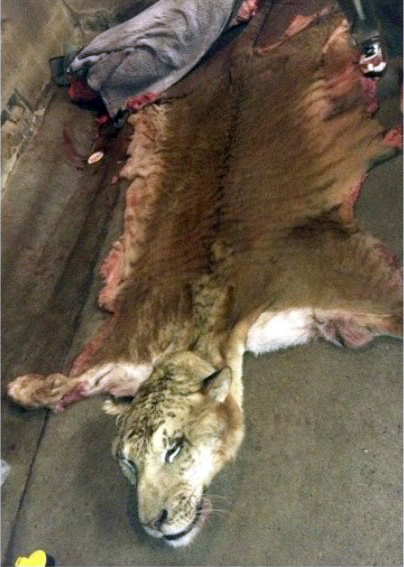 The highlights from the show confirm so many things we’ve been telling the public for decades. Antle was born Kevin Antle and despite his claims that his mother named him Bhagavan on his birth certificate he was apparently just a high school drop out, trust fund baby of the Lettuce King who decided to reinvent himself. He changed his name and began telling everyone he was a doctor, but everyone who knew him at the time, who spoke up in the show, said he never had any schooling that would earn him the title of doctor; medical nor academically speaking, so can we just call him Antle?
The highlights from the show confirm so many things we’ve been telling the public for decades. Antle was born Kevin Antle and despite his claims that his mother named him Bhagavan on his birth certificate he was apparently just a high school drop out, trust fund baby of the Lettuce King who decided to reinvent himself. He changed his name and began telling everyone he was a doctor, but everyone who knew him at the time, who spoke up in the show, said he never had any schooling that would earn him the title of doctor; medical nor academically speaking, so can we just call him Antle?
As expected of Eric Goode and Rebecca Chaiklin, the three part series was mostly about Antle’s reported predilection for teenage (or younger) virgins and missed, almost entirely the vile training methods used to keep the animals under control. In an article that has since come out by a former employee, Magenta, she states, “My one complaint is that I think the show glosses over the animal abuse and neglect at his facility. Doc Antle is no animal lover. He uses both animals and people for his own benefit, and has wounded so many. I do hope that he faces justice for the animal abuse and neglect. The way he treats people is bad enough. He is so much worse to those who cannot speak for themselves.”
She details one such training method that she says she witnessed as follows: “Damascus was so excited to be taken out of his prison. I was excited to see him out and about. Doc started with “table training”. For hours, that sweet, gentle little bear was forced to lie, clipped to a heavy iron table, with a heavy chain wrapped around his little neck, unable to move his head more than a few inches. Eventually, Doc came back, and began harassing him. He poked and prodded and harassed Damascus until the poor thing finally growled back. Not much, mind you — his head was still locked to the table. As soon as he got the very slightly aggressive response he was looking for, Doc jumped up on the table with his steel-toed boots, and spent the next five minutes kicking the hell out of this terrified, trapped baby bear. Damascus screamed and tried to get his body out of the way, but his head was still attached to the table. There was nowhere to go. “If they aren’t scared of you when they’re young, they’ll eat you when they get older”.
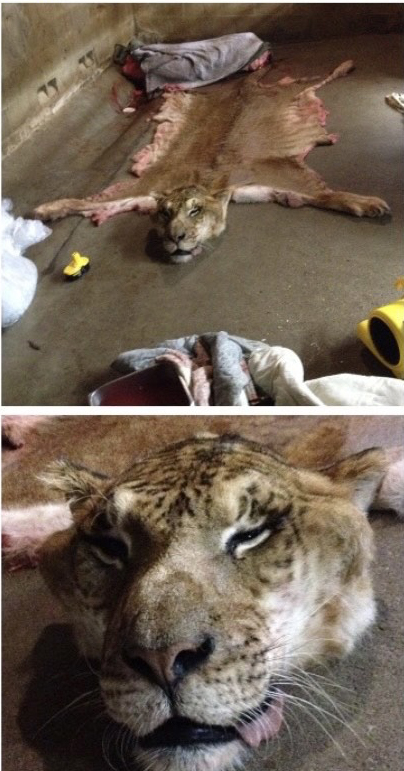 This isn’t just one bad trainer’s methods. EVERY time you see a big cat, or apex predator, allowing a human to tell them what to do on stage, this is how it’s done! When YOU stop going to such shows, the abuse will stop.
This isn’t just one bad trainer’s methods. EVERY time you see a big cat, or apex predator, allowing a human to tell them what to do on stage, this is how it’s done! When YOU stop going to such shows, the abuse will stop.
There are still questions about Antle that I want answers to, that were not spoken of, or clear in the Netflix show. Two of Antle’s children (who Magenta describes as victims of Antle) Tawny and Kody, were born to Dawn Marie Thurston who reportedly died in a car crash 8/13/1997. It just seems to wild of a coincidence that she died within 5 days of Don Lewis (another alleged pediphile according to eye witness reports in Tiger King 2) disappearing on 8/18/1997. Antle and Mario Tabraue were close friends from the 80s, and Karl Mitchell claims he was close to both of them, so how could it be possible that Don Lewis wasn’t a part of all of the wildlife and drug smuggling that was suggested of these animal exploiters?
I still want to know where all the cubs went every year. How can you have half a dozen cubs during the entire tourist season to choose from for pay to play schemes and only have an increase in your census by 2 or 3 big cats? I hope that as more of Antle’s alleged victims come forward we will find out more about the incinerator and what happened to the cubs who at about the age of 12 weeks became too dangerous to handle. I think it will be hard for people to admit they knew or suspected such cruelty without doing anything before now. Already there are photos starting to float around the Internet of big cats being butchered for their skins in the abysmal barn where all the big cats, and workers lived. The stories are sure to follow. One of the stories that has surfaced already is suggesting that Antle and one of his girlfriends sit atop a pile of big cat skins to meditate because they think it gives them special powers. If this is true, I’m betting plenty of people knew about it who could speak up for the animals.
Those who traveled with Antle to foreign countries on vacation claim that the use of donor funds for conservation was just paying for them to have a good time and not really supporting any sort of conservation program. If you donated to the Rare Species Fund, you should ask for your money back at a minimum or ask the IRS to investigate the use of those funds that were solicited from unwitting patrons that apparently evaded taxation.
Guardian Review before the show aired: “Inevitably, yes. Netflix has asked reviewers not to reveal too many specifics about The Doc Antle Story, but the short explanation is that Antle is not a great guy. Over the course of three episodes, we’re fed a slow drip of his abuses. And there are many to get through: coercion, child abuse, underage marriage, near-starvation, animal cruelty, foggy accusations of murder. One by one, victims and acquaintances from every stage of Antle’s life reveal a pattern of behaviour that is harrowing and ugly.” https://apple.news/A1Dhh_u2BQaKYgoBkjORLHg
Wildlife Abuse and Wildlife Trafficking
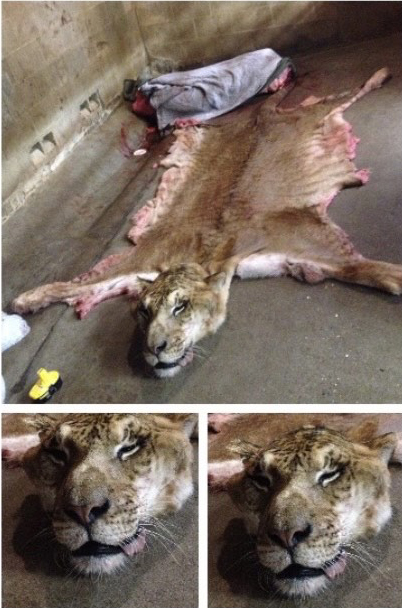 9/27/2021 Antle’s jury trial for charges that include felony counts of wildlife trafficking and conspiracy to commit wildlife trafficking, along with misdemeanor counts of animal cruelty and conspiracy to violate the Endangered Species Act is set to begin October 31, 2022 in Frederick Circuit Court, according to Virginia court records. Read more at: https://www.myrtlebeachonline.com/entertainment/article254499312.html
9/27/2021 Antle’s jury trial for charges that include felony counts of wildlife trafficking and conspiracy to commit wildlife trafficking, along with misdemeanor counts of animal cruelty and conspiracy to violate the Endangered Species Act is set to begin October 31, 2022 in Frederick Circuit Court, according to Virginia court records. Read more at: https://www.myrtlebeachonline.com/entertainment/article254499312.html
6/24/2021 Round One: Prosecutors 1 VS Antle Clan 0 https://www.winchesterstar.com/winchester_star/judge-rules-for-prosecution-in-wild-animal-cruelty-case/article_a1b27a5d-bd1b-56f9-982d-dc2f58d3b51a.html
Antle Exposed in Trafficked
Shout out the Mariana Van Zeller and her team for doing the best job I’ve seen so far connecting the dots between petting a tiger cub and that causing their extinction in the wild. Big Cat Rescue hosted her in December of 2019 and explained that the surplus cubs, who age out of cub petting at about 3 or 4 months of age, end up in pet homes, illegal markets for their parts or in tiger mills like GW Zoo, Jeff Lowes’, “doc” Antle’s, Tim Stark’s, etc. That expands the market for their parts, which increases demand for the wild tiger as the premium product. It also destroys the U.S.’s credibility on the world stage when we speak out against China, Thailand, Laos and Myanmar who are farming tigers to use their parts because they point at us and say we don’t even know where our tigers are due to virtually no government oversight.
She also exposed how Antle had exported cubs to one of the worst places in Thailand; Samutprakarn Crocodile Farm and Zoo where you have seen photos online of people beating chained tigers to make them pose with tourists. You won’t see beatings in this documentary, so you should really watch this show at: https://www.nationalgeographic.com/tv/shows/trafficked-with-mariana-van-zeller/episode-guide/season-01/episode-07-tigers/vdka21627547
Kevin Bhagavan “doc” Antle and daughters indicted!
Bhagavan Antle, who is known as Doc and is the owner of Myrtle Beach Safari in South Carolina, was charged with two felony counts related to wildlife trafficking and 13 additional misdemeanors, according to the Office of the Attorney General of Virginia.
- one felony count of wildlife trafficking
- one felony count of conspiracy to wildlife traffic
- four misdemeanor counts of violating the Endangered Species Act
- four misdemeanor counts of conspiracy to violate the Endangered Species Act
- nine misdemeanor counts of animal cruelty
- 19 total charges
Tawny Antle and Tilakam Watterson, daughters of Mr. Antle, are also facing several misdemeanor charges in connection with animal cruelty and alleged violations of the Endangered Species Act.
This led us to update our information on the questionable practices we believe to be occurring under the guise of a non profit. You will be shocked at what has been uncovered by our fantastic researcher!
I could find no records of any registered organization called the “Rare Species Fund” in either federal or South Carolina nonprofit databases. Legally, it doesn’t exist other than as a D.B.A. for Preservation Station, Inc, a nonprofit corporation registered in Florida by Susan Aronoff which appears to be the only organization Antle actually runs. The interesting connection here is: Why would Susan Aronoff Bradshaw say that she did not witness Don Lewis’ signature on the will and power of attorney after she had signed a sworn affidavit to the contrary in 1997? Could it be because she wanted to get exotic cats, like clouded leopards and other expensive, rare and endangered species from Kevin Bhagavan “doc” Antle, and disparaging Carole Baskin would buy her way into his inner circle? Consider for yourself the fact that the next time her FL corporate entity, Preservation Station, came up for renewal in 2006, after Susan recanted her sworn testimony in 2005, Susan Aronoff Bradshaw added Bhagavan Antle to her board of directors and consistently added more of his family until 2013 when only Antle and company are on the board.
The database of South Carolina business filings contains no legal corporate entities registered under any of the multiple names Antle uses for his zoo — Myrtle Beach Safari, Preservation Station, T.I.G.E.R.S., etc. and according to Bizapedia, the only business entity associated with Bhagavan Antle is “Preservation Station, Inc.”
As far as I can tell, “Preservation Station” is the umbrella organization under which all of Antle’s zoos and “charities” are operated. Myrtle Beach Safari, T.I.G.E.R.S., and the Rare Species Fund are all different names Antle seems to be using for the same entity, so on paper that would indicate, he isn’t running separate for-profit businesses at all, and there’s no such thing as “RSF funds” vs. “zoo profits.”
Antle himself has referred to “TIGERS/RSF” as a single entity on his blog and on the Myrtle Beach Safari website, it’s stated that the RSF is the “nonprofit division” of Myrtle Beach Safari. So, since Antle’s different enterprises and fundraising schemes are just divisions of the same nonprofit corporation, “donations” to the RSF would appear to go into the same account as his zoo profits. This seems to us to be a very deceptive and ethically questionable.
It’s my understanding that nonprofits are allowed to make income as long as the money is reinvested into the nonprofit’s mission, and as long as any business activities are “substantially related” to its tax-exempt purpose. Since Preservation Station Inc. specifically included “education,” “conservation,” and keeping captive wildlife as its tax-exempt purposes with the IRS, that would theoretically allow Antle to write off his cub-petting, zoos, and tiger shows as “education” and “conservation,” and that’s definitely appears to be what he’s trying to do. The problem comes in where the public may not realize what is going on. The Rare Species Fund website even lists his two zoos and his renaissance fair big cat show as North American “conservation projects” supported by the RSF.
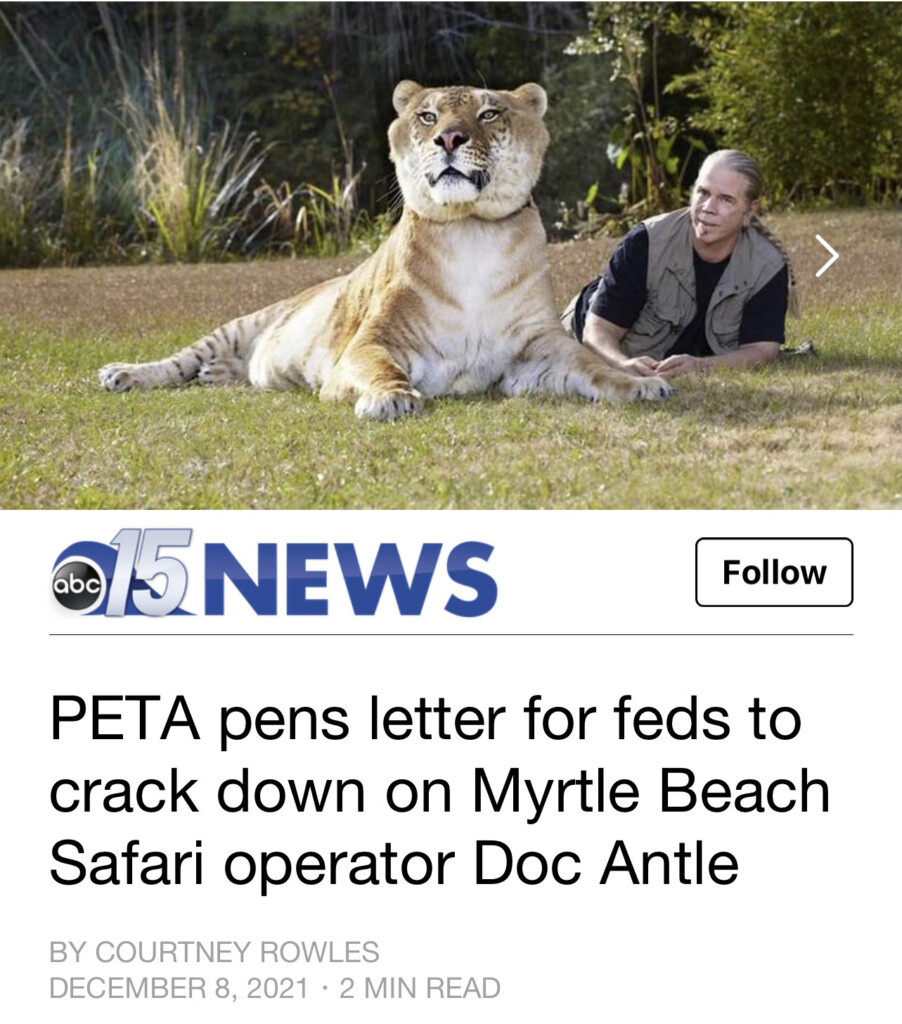 I just couldn’t believe that Antle wasn’t registered to operate a business in SC, so I tried searching the state’s databases again with some different names tonight. And lo and behold, a company named T.I.G.E.R.S. LLC was registered there as a for-profit entity in 2011 by Daniel G. Lewis, the same accountant who filed Antle’s tax returns. On the same day, Lewis also registered South Carolina Conservation Farm LLC. State records also show that Daniel Lewis registered ROAR LLC in 2013 (no proof that there are any ties to Antle) and in 2012, he registered the “International Wildlife Conservation and Education Coalition” as a nonprofit. This group still has a website, and appears to have been an attempt by Antle to make up a fake pseudo-accreditation scheme for his zoos and those of his friends. The site claims that funding for this group was generated by the Rare Species Fund as well as Antle’s zoos, so maybe it was some kind of shell organization? Antle doesn’t seem to have mentioned this group at all, and its Facebook page has been deleted, so I assume that the “project” is now defunct.
I just couldn’t believe that Antle wasn’t registered to operate a business in SC, so I tried searching the state’s databases again with some different names tonight. And lo and behold, a company named T.I.G.E.R.S. LLC was registered there as a for-profit entity in 2011 by Daniel G. Lewis, the same accountant who filed Antle’s tax returns. On the same day, Lewis also registered South Carolina Conservation Farm LLC. State records also show that Daniel Lewis registered ROAR LLC in 2013 (no proof that there are any ties to Antle) and in 2012, he registered the “International Wildlife Conservation and Education Coalition” as a nonprofit. This group still has a website, and appears to have been an attempt by Antle to make up a fake pseudo-accreditation scheme for his zoos and those of his friends. The site claims that funding for this group was generated by the Rare Species Fund as well as Antle’s zoos, so maybe it was some kind of shell organization? Antle doesn’t seem to have mentioned this group at all, and its Facebook page has been deleted, so I assume that the “project” is now defunct.
I also just discovered a great investigative journalism piece published in April by the Myrtle Beach Sun News which examined the RSF and Antle’s many other “charities” with a fine-toothed comb and found details and discrepancies that I initially missed:
“Nonprofits exempt from income tax are required to submit financial information annually, via Form 990, to the IRS and state governments, and records show Rare Species Fund is registered as a 501(c)(3) in Florida as Preservation Station Inc. The forms require disclosure of revenue, expenses and board members — which include Antle, his son and three employees, despite an assertion in their reports that no officer has a family or business relationship with any other officer.“
“The [RSF] website doesn’t appear to list amounts of money given to specific organizations, but a review of the organization’s social media pages found images of oversized checks given to Conservation Through Public Health in Uganda in December 2015 and Leuser Conservation Forum in Sumatra in December 2017. But the amounts don’t match up with what’s reported in the nonprofit’s annual reports. The check for the Uganda organization shows $15,790, while the Rare Species Fund’s report shows no money granted to foreign organizations in 2015, and the check for the Sumatra organization shows $105,000, while less than $35,000 was reported as given to foreign organizations in 2017. Neither organization responded to requests for interviews.”
[Antle] said he donates a lot of money personally to organizations, and it doesn’t have to go through the nonprofit.
“It’s my money and I take my money, by the millions and millions of dollars, over decades of time and I help other wildlife organizations to flourish,” Antle said.
If he’s referring to profits taken in by Preservation Station, a legally-registered 501(c)(3) nonprofit, it’s not legally “his money” to personally take, since the legal definition of a nonprofit is that nobody can own it. And if he’s soliciting donations for his nonprofit and then claiming that the money “doesn’t have to go through the nonprofit,” that’s blatant fraud.
[Antle] added that Rare Species Fund doesn’t run fundraising campaigns, but rather the income is primarily created by operating Myrtle Beach Safari.The annual reports show almost all of the revenue is contributed by South Carolina Conservation Farm LLC, with an address listed as the same as Antle’s Myrtle Beach facility. The company is registered in South Carolina under David G. Lewis, a Conway area accountant, who is also the listed agent for T.I.G.E.R.S. LLC and International Wildlife Conservation and Education Coalition LLC. Lewis, who is also listed as the preparer for the Rare Species Fund’s annual reports, did not return a message left at his office.”
There’s a lot more in the story exposing Antle’s multiple web domains, debunking his fake conservation claims, and even explaining why “Tiger King” and unaccredited roadside zoo breeding is bad for actual tiger conservation, but there’s no need for me to reproduce the whole article here when you can read it straight from the source.
Despite USDA Warnings Antle Still Pimping Out Tigers
2020-05-14_USDA tells facilities limit cub petting
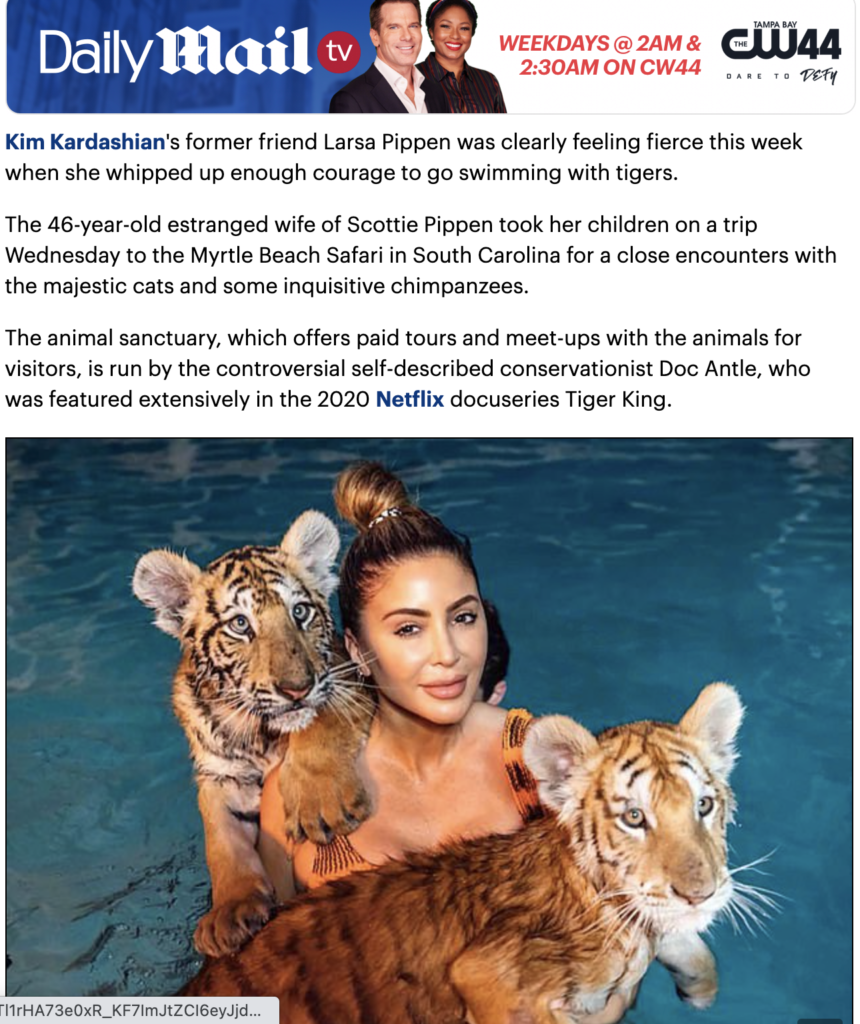
RSF Spent Over $1 Million on D.C. Lobbyists
Antle’s “Rare Species Fund” is suspicious enough that even National Geographic questioned them in their astoundingly detailed investigative feature about the tiger trade in America. The reporter visited Antle’s zoo last year and wrote:
One visitor booked a swim-with-a-tiger session for $5,000. After dark, nearly 30 joined a “night safari.” I estimated the day’s receipts at about $50,000.
The tour gave customers the impression that it was all for conservation. The RSF supports some conservation projects, but staff wouldn’t say how much the fund donates each year, and some of its activities have raised questions. Among them are “educational” tiger performances at Renaissance fairs, where Antle told me he’d sold about a million photo ops with adult tigers and ligers. Antle also has delivered tigers to Thailand’s Samut Prakarn Crocodile Farm and Zoo; in June National Geographic published a story about animal abuse at that attraction.
The fund’s website says it is “working to improve wildlife legislation.” In the past decade, Antle’s businesses have spent at least $1.15 million lobbying on proposed regulations on captive wildlife and big cat issues—including $60,000 to lobby against the Big Cat Public Safety Act.
You read that right: according to public records, between 2008 and 2020, Preservation Station paid a lobbying firm called Vitello Consulting a total of $1,265,000 to lobby the US House of Representatives in “opposition to [HR 1380, Big Cat Public Safety Act] as drafted.” Their most recent payment to Vitello was Q2 2020, so this is an effort which continues to this day, at a rate of $30,000 per fiscal quarter — a total which does not appear to be reflected in Preservation Station’s tax returns.
This lobbying is described on the RSF website as “work[ing] regularly with policy makers in Washington D.C. to help shape the course of wildlife legislation and conservation policies.”
Does Antle Use Conservation Contributions to Buy Animals From the Wild?
To answer your question about imports, I couldn’t find any proof that Antle was using RSF money to purchase or import animals, and no USFWS import requests under his name. With his constant breeding, though, he has exported cubs to other facilities through the RSF and called it “conservation” (more on that later) and since he’s writing off all of his zoo business as nonprofit work, it’s certainly possible that he could have bought or imported animals using public “donations.” The closest thing I could find to an import was a USFWS permit request he made in 2015 in an attempt to ship 18 tigers to Cancun to film a movie with them, ostensibly to promote “conservation.” Antle was on the record saying that he’d “donate” $10,000 to get that permit, which as far as I know was never granted:
The permit application to send 18 tigers to Mexico for a Hollywood movie was filed by Bhagavan Antle, who operates the Myrtle Beach Safari in South Carolina. Antle declined to name the people behind the movie, which is tentatively titled “Tiger Island.” The plot revolves around tigers living on an abandoned island, and a group of children who end up shipwrecked there.
The permit is still pending, but records show that Fish & Wildlife officials directed that Antle confirm a pledge of $10,000 to charity and a promise that the movie will have a conservation theme. He has agreed to do so, and said he thinks the agency’s process is good because it helps endangered animals. Antle said $10,000 is a fair contribution for the right to use 18 tigers on a multimillion-dollar motion picture.
“The movie company thinks it’s a hardship – to spend $10,000 for what used to be free,” Antle said. But he added, “If it becomes a big hit movie, that will change more hearts and minds than a $10 million contribution to conservation.”
Where The Money Really Goes
This is a 2022 analysis of the money coming into and out of the Rare Species Fund 2007-2019
ProPublica hosts all of Preservation Station’s tax returns, including full filings, from years 2007-2018.
On average, it looks like around 66% of reported revenue (which is likely much smaller than his actual revenue) is typically used for upkeep of Antle’s tourist attractions, and the 2011 tax return is almost completely blank. In 2016, he spent over $192,000 more on the zoo than on donations to external groups.
As for where the “donations” not spent on Antle’s zoo end up, there’s evidence that quite a few of the “international wildlife conservation programs” listed as beneficiaries on the RSF website include unaccredited tourist attractions, exotic animal breeders/brokers with ties to the illegal wildlife trade, and foreign zoos, which he falsely claims are “wildlife preserves.”
RSF Sends Tigers to Thai “Hell” Breeding Farm & Supports Wildlife Traders in Africa.
Perhaps the most egregious example of fake “conservation” work done by The Rare Species Fund makes it sound as if they released some of their tigers to a wildlife preserve in Thailand. According to the RSF website, they “donated and personally transported 7 tigers from our Myrtle Beach, South Carolina preserve to the Samutprakarn Wildlife Preserve South of Bangkok.” The announcement went on to say, “A healthy and thriving litter of cubs just heralded the first success of this groundbreaking program.”
This sounds great, except the Samutprakarn Wildlife Preserve in Thailand is not really a preserve, and nobody but Antle has ever referred to it as such. Actually called the Samutprakarn Crocodile Farm and Zoo, this is a notoriously cruel tourist attraction which breeds and exploits wildlife for profit and is strongly suspected of operating an illegal “tiger farm.” There is a thriving market for tiger parts in Thailand and significant evidence that many tiger breeding attractions in the country are involved in the illegal slaughter and trafficking of tigers on the black market.
Local watchdog group For Tigers has investigated Samutprakarn and uncovered many red flags for trafficking, including adult tigers regularly disappearing without a trace and a wildly inconsistent number of tigers on-site which cannot be reconciled with the amount of cubs constantly bred there. The RSF announcement boasts that four color variants of tiger were included in their “donation” to Samutprakarn, meaning that their genes could never be introduced into the wild and any “breeding program” these tigers are participating in is merely to produce more moneymakers, not for conservation.
Furthermore, Samutprakarn (also referred to as Samut Prakan) has been called an “animal hell” for horrific neglect and abuse. Recent visitors to the zoo have photographed tigers covered in gaping sores and chained to the ground for “selfies,” tiger cubs crammed into rusty cages, a chained infant orangutan being dragged and hit in the face, and myriad other abuses. In 2016, Thai authorities investigated Samutprakarn after a photo of severely emaciated elephants being forced to perform circus tricks went viral. The authorities discovered that Samutprakarn was operating without a zoo license. In June 2019, Samut Prakan was highlighted in a heartbreaking National Geographic Magazine article focusing on animal exploitation in tourism:
Of all the silently suffering animals I saw in pools and pens around the world, two in particular haunt me: an elephant and a tiger.
They lived in the same facility, Samut Prakan Crocodile Farm and Zoo, about 15 miles south of Bangkok. The elephant, Gluay Hom, four years old, was kept under a stadium. The aging tiger, Khai Khem, 22, spent his days on a short chain in a photo studio. Both had irrefutable signs of suffering: The emaciated elephant had a bent, swollen leg hanging in the air and a large, bleeding sore at his temple. His eyes were rolled back in his head. The tiger had a dental abscess so severe that the infection was eating through the bottom of his jaw.
When I contacted the owner of the facility, Uthen Youngprapakorn, to ask about these animals, he said the fact that they hadn’t died proved that the facility was caring for them properly. He then threatened a lawsuit.
Six months after Kirsten and I returned from Thailand, we asked Ryn Jirenuwat, our Bangkok-based Thai interpreter, to check on Gluay Hom and Khai Khem. She went to Samut Prakan and watched them for hours, sending photos and video. Gluay Hom was still alive, still standing in the same stall, leg still bent at an unnatural angle. The elephants next to him were skin and bones. Khai Khem was still chained by his neck to a hook in the floor. He just stays in his dark corner, Jirenuwat texted, and when he hears people coming, he twists on his chain and turns his back to them.
“Like he just wants to be swallowed by the wall.”
This is what donations to the Rare Species Fund to “save wild tigers” are really supporting — the illegal trade of tigers in Thailand. No legitimate conservation group would ever consider sending animals to a place like this, much less call it “conservation.”
And what’s really bizarre is that Doc Antle seems to be proud of his support of Samutprakarn. He “hand delivered” the tigers there, and like a cult leader, he has (or had) banners of him kissing a tiger plastered all over Samutprakarn’s tiger area — I could have sworn I saw pictures of them, but no luck finding them now (they are described in this review as “some mulleted Westerner on an ego trip kissing a large white tiger.”) And speaking of cult leaders, you should read this disturbing first-hand account from a woman who used to work for Antle after being groomed by him as a vulnerable 19-year-old. He clearly appears to have no qualms about abusing and enslaving animals or young women.
The Rare Species Fund has also openly supported commercial wildlife breeders, traffickers, and canned hunt operators in Africa. As of 2020 the front page of its website reads;
“The Rare Species Fund actively supports the African Association of Zoos and Aquaria (PAAZAB) in its efforts to improve African zoo collection management, captive animal husbandry and public educational messages.” Again, it sounds nice, but the PAAZAB is a trade association for privately-owned zoos,game ranches, and wildlife breeders in Africa. Some of its members are good, but the South African captive wildlife industry is notoriously corrupt, and the association includes a rogue’s gallery of illegal traffickers and facilities associated with canned hunts. PAAZAB “accredited” facilities include:
The Endofaun Zoo, owned by infamous wildlife trader Jimmy Magill. Magill, who once served on the council of the PAAZAB and runs a taxidermy from the zoo property, “sells large numbers of tiger cubs and adult tigers to Thailand and Vietnam” and is not registered as a CITES breeding facility for tigers. Magill has also sold live rhinos to private buyers in Vietnam and China and exports large numbers of primates to Chinese research laboratories through his corporation Zoological Live Animal Suppliers. In 2015, authorities investigated the Endofaun Zoo for animal cruelty after several animals were discovered living in “horrendous conditions.” As of April 2019, the Endofaun Zoo was again under criminal investigation after two leopards died due to negligence.
Bester Birds and Animal Zoo Park, an exotic animal export company owned by international wildlife broker Mike Bester. Bester is a founding patron and former executive committee member of the PAAZAB. He is not a registered CITES breeding facility and has exported tigers to “questionable destinations” in Thailand, Trinidad and Tobago, and the United States. Bester has sold six endangered cheetahs to a Chinese “horror park” where animals are drugged and beaten for photo-ops, brokered the sale of 24 live rhinos to buyers in Vietnam and China with known or suspected involvement in the rhino horn trade, and exported live tigers and rhino to a millionaire private collector in Vietnam in 2009 and 2010. In May 2006, Bester sold 33 illegally-obtained monkeys to U.S. zoos for $400,000, bragging to an undercover reporter “I have the biggest shipment of primates that has ever come out of the Congo… …people bought them very, very quickly because it’s a new bloodline. All out of the wild. Every one.”
Cango Wildlife Ranch, a private big cat breeder and cub-petting operation which has sold cheetahs to Chinese zoos and tigers to private collectors in the United Arab Emirates. Cango breeds and sells white tigers and has collaborated with the infamous John Varty for tiger breeding. Owner Andrew Eriksen once served as a committee member and former Chairman of the PAAZAB.
The infamous “Lion Park” in Bloemfontein, South Africa, which was exposed by 60 Minutes for breeding lions for the canned hunting industry.
Johannesburg Zoo, which leased, sold, and traded lions with canned hunt operator Marius Prinsloo for years. Prinsloo openly believes that “farming” lions to be shot is no different than slaughtering cattle and once operated a website advertising the hunting price for each of his lions.
RSF Donations to Legitimate Groups
The RSF does occasionally support legitimate conservation efforts (for example, the Victoria Falls Anti-Poaching Unit is one of the few NGOs to confirm support from the Rare Species Fund) but many of its contributions to real conservation groups are small, unverifiable, or part of well-established “voluntourism” programs despite Antle’s lie that “many of the grass roots projects would not be operational without direct support from the Rare Species Fund.” They may have done some good, but it’s often more puffery and self-promotion than actual impact.
I didn’t review every project the RSF claims to support, but the ones that I did investigate seemed to follow a similar pattern: The Rare Species Fund typically “donates” relatively inexpensive items to legitimate conservation groups in Africa or Asia, sends staff overseas to hand-deliver the items (an astounding waste of money), and then takes all of the credit for the conservation successes of that group. And due to their lack of transparency, there’s no way to confirm that some donations were made at all, or to the degree RSF claims. A few recent examples:
The Rare Species Fund is currently boasting about funding Forum Konservasi Leuser, a legitimate Indonesian NGO working to protect and restore the Leuser Ecosystem. Antle claims that “RSF provided 100% of the funding to rebuild the Soraya Station Research and Ranger Outpost”, “equips and pays 32 Forum Konservasi Leuser (FKL) Rangers”, and “provides funding to buy back and restore habitat to be held in trust for Mount Leuser National Park.” However, I was unable to verify how much funding was actually donated to FKL by the Rare Species Fund. In a press release, Antle claims that “The building of the research station and commencement of the wildlife patrols did not begin until the Rare Species Fund made a full commitment to sponsor the project” and refers to Soraya Station as “the Rare Species Fund Forest Research Station.” If the RSF was truly such a big donor, you would think that FKL would thank them for it, but there is no mention of the Rare Species Fund on Forum Konservasi Leuser’s social media accounts (other than Doc Antle commenting on their posts to insist that he “100% funded” their research station) and on the FKL website, the organization explains that “In 2016, FKL alongside multiple parties rebuilt the station.” In his Soraya Station press release, Antle also claimed that “Upon commitment by RSF to fund the project, an official agreement was signed with the Aceh Forestry Department to manage 19,000 hectares of lowland Benkung forest”, but I could find no records of such a deal.
In 2017, the RSF published a press release about their in-person donation of a single drone to anti-poaching rangers in Uganda, making it seem like they spent donor funds on the equipment. In 2019, a press release by a drone manufacturer revealed that another shipment of drones was provided to RSF for free. The only thing the RSF did was deliver them to Africa after making chimpanzees pose with them for promotional photos and videos.
The RSF website currently lists the “Tiger Lantern Project” as one of their Asian conservation efforts, claiming that “the RSF works with The Corbett Foundation to supply villagers from Kanha National Park in central India with lanterns and solar powered charging stations.” They even made a slick-looking promotional video to make it seem like they originated the project. But once again, there is no mention of a “Tiger Lantern Project” or the Rare Species Fund on the Corbett Foundation’s website. In fact Big Cat Rescue was told by Corbett that they had returned a donation made by Antle because they did not wish to appear to “green wash” his activities.
What the website does mention is that “The Corbett Foundation, with the support of Anandana (Coca Cola India Foundation), launched the Akshay Urja, Swastha Jeevan project that provides environment-friendly renewable energy access in remote villages with erratic electricity supply around the Corbett Tiger Reserve. Under the project, over 3000 solar-powered lanterns have been distributed in the first phase to families living in remote villages in the buffer zone of Corbett Tiger Reserve and its surrounding forest divisions.” The photos on the Corbett Foundation website are the same ones used by the RSF in their promotional materials.
Dr. Robert Johnson and RSF “Research”
Dr. Robert Johnson is adjunct college professor who serves as the Rare Species Fund’s COO and “head of field operations.” He also happens to be a head trainer for T.I.G.E.R.S. and has worked for Doc Antle since 1994. Several “RSF conservation projects” promoted on the website and RSF Facebook page appear to be little more than Johnson/other head T.I.G.E.R.S. staff traveling overseas to volunteer, deliver donations, and go on safari. Then, the RSF promotes the trips as a special conservation or “research” activity supported by the RSF. For example, an RSF blog post written by Johnson details how difficult it was for him to personally fly hundreds of pounds of equipment from Myrtle Beach to the rangers at Soraya Station in Indonesia. “Hand delivering” simple items like chainsaws and clothing makes little financial sense when the RSF could simply donate money and have the rangers purchase their own supplies in Indonesia.
Other questionable and possibly fraudulent RSF “conservation projects” include:
Having Santa Claus show off liger cubs to children at Antle’s Miami zoo.
The federal Vanishing Species Stamp program, which the Rare Species Fund takes credit for despite having had almost nothing to do with it. We believe Antle falsely claims that “Doc Antle’s Rare Species Fund was a partner in establishing the U.S. Postal Service’s Save Vanishing Species stamp in 2011.” After the release of Tiger King, some celebrity tabloids have started repeating his lie that he personally collaborated with the US Postal Service to single-handedly create the stamp. But in reality, the Vanishing Species stamp program was first suggested in 2000 by the World Wildlife Fund and Wildlife Conservation Society and introduced in Congress in 2009 as a popular bill with strong bipartisan support. The only “contribution” Doc Antle made was a short testimony to a small congressional subcommittee in 2009, where he promoted his own zoo and briefly advocated for the bill.
Bringing baby tigers, ligers, and chimps to the halls of Congress for lawmakers to cuddle in order to “illustrate the importance of wildlife ambassadors to legislators.” This activity is illegal in D.C. and we believe he does it so that lawmakers won’t pass a law to ban cub handling nationally, if there are photos of themselves doing it.
The International Conservation Caucus Foundation (ICCF), which the RSF claims is “perhaps the world’s most influential conservation organization” and a “proud partner.” It’s actually a shadowy corporate lobbying group which “works with polluting companies, the oil lobby, and anti-environment lawmakers” to provides swanky galas and all-expense paid vacations to legislators thanks to a loophole in corporate lobbying rules. Mother Jones reports that the ICCF “has been timid at best on conservation issues”, is suspected of tax fraud, and that its founder previously spent decades “providing lobbying, public-relations, and consulting services for a succession of West African dictators.”
Elephants of Africa Rescue Society (EARS), listed on the RSF website as “a non-profit organization that protects safe habitats for wild African animals and their captive cousins.” EARS is actually part of a private menagerie called Vision Quest Ranch, which rents out exotic animals for TV and movie productions. EARS brings captive elephants to fundraising events and is owned by animal trainer Charlie Sammut, who is “not a trained zoologist” and who was recently sued for illegally using bullhooks and canes to “discipline” elephants at his Monterey Zoo, which was named one of the “Worst Zoos for Elephants” by In Defense Of Animals. Necropsy reports on two of Sammuts’ elephants which suddenly died in 2019 showed that “one elephant’s intestinal tissue was rotting away and another was likely unable to move without agony.”
Potential Legal Issues
Since Antle is treating his whole organization as a single entity, I’m unsure that his allocation of finances is illegal per se. That said, I did come across several other major potential legal infractions during my research:
The Propublica lobbying disclosures reveal that Preservation Station has consistently failed to disclose its payments to lobbyists on their tax returns. This is a federal crime that the IRS takes very seriously.
Furthermore, Preservation Station doesn’t seem to be registered as a nonprofit in the state of South Carolina, which would prohibit Antle from soliciting donations at his zoo there. Per state law, “all charitable organizations that solicit contributions or have contributions solicited on their behalf must register with the Secretary of State’s Office prior to any solicitation activity and on an annual basis.” I could find no records suggesting that Antle or his organization have done this.
Even weirder, I couldn’t find any evidence that Antle’s South Carolina operations are registered with the state at all, so it’s possible that he’s not even authorized to do business in SC.
South Carolina nonprofit law requires that organizations incorporated in other states apply for a “Certificate of Authority to Transact Business” before operating in SC. But Antle’s name, and the names of his associates, don’t show up as “registered agents” in the state’s database of corporations, and the database of South Carolina business filings contains no nonprofits, business entities, or Certificates of Authority registered under any of the multiple names Antle uses for his zoo. I find it hard to believe that he could have run such a visible Myrtle Beach tourist attraction for so long without being on file with the state, and he does use his South Carolina address on his federal tax returns, but try as I might, I can’t find any state-level records of his organization’s existence. And the “smoking gun” is that, in Preservation Station’s 2019 charity filing with the state of Florida, Antle responded “NO” to the question “Is this organization authorized by any other state to solicit contributions?”
The full PDF of this form is attached; and you can view his other filings by searching “Preservation Station” on Florida’s “Check-A-Charity” search tool.
On this form, Antle also denies using any “commercial co-ventures” to raise money, even though he explicitly stated, during a Congressional testimony, that “T.I.G.E.R.S. is a commercial public display operation.”

The registration form also says that “All fictitious names must be registered with the Division of Corporations. You must list all names under which you intend to do business.” But the only fictitious name Antle has registered in FL is “Rare Species Fund.” He never registered the names of any of his zoos, including Jungle Island in Miami. In fact, the name “Jungle Island” is already registered by someone else, so Antle technically isn’t allowed to do business under that name.
And of course, the big legal problem is that if Antle’s entire corporation is truly a registered nonprofit, then it’s against federal law for him to be personally profiting off of his zoo beyond “reasonable compensation.” Standing in line at his ticket counter makes it clear that there’s no way his little empire is only bringing in the amount of “donations” recorded on his tax returns when one location can rake in $50K per day, or that Antle and his staff have $0 salaries, so it seems the only reasonable explanation is that he’s lying on his tax returns.
Are There Big Cats Here?
6000 SW 118th Ave, Miami, FL 33183 is the address listed for Preservation Station and it’s a half acre covered in what appear to be cages, so who has a license there to own big cats if it’s not Antle?
Disturbing Photos Inside T.I.G.E.R.S. by USDA
USDA Inspections and Photos of Doc Antles Conditions
Where are all the cats?
There are 79 big cats on HOW many acres at “doc” Antle’s TIGERS in Myrtle Beach, SC? If you pull 751 Folly Ranch Lane up on google maps you will see that the tract of land is, at the most, about 27 acres. The property shows a bunch of houses and trailer houses for people, so at the most it would appear there about 18 acres housing 79 huge carnivores. If all that space were carved into large habitats for the cats, we’d see cages that were a quarter acre each in size, but you don’t see that when you go there or from above. You don’t see 79 exotic cats either, so it would stand to reason that they are crammed into the barns where the public is not allowed to see. If they were proud of the way their cats live, then why not show that to the skeptical?
Warrants Being Served
By WMBF News Staff | December 11 at 4:41 PM
HORRY COUNTY, S.C. (WMBF) – Law enforcement agencies are conducting an investigation at Myrtle Beach Safari, owned by Bhagavan “Doc” Antle according to officials. Tommy Crosby, spokesperson for the South Carolina State Law Enforcement Division, said agents are in the process of serving search warrants at the Safari, located off Folly Ranch Road, as of 2:40 p.m.
Kaley Lawrimore, spokesperson for the South Carolina Department of Natural Resources, confirmed they are assisting SLED in the investigation.
According to Antle, he’s had the lions for roughly four months, since they were cubs. He said the cubs’ mother was not taking care of them, so the safari took them in. Stay up to date here. The next hearing is scheduled for April 2021.
AKA Kevin Antle, Bhagavan Antle, Rare Species Fund, Preservation Station
USDA cites for recurring problems with ringworm on the tiger cubs.
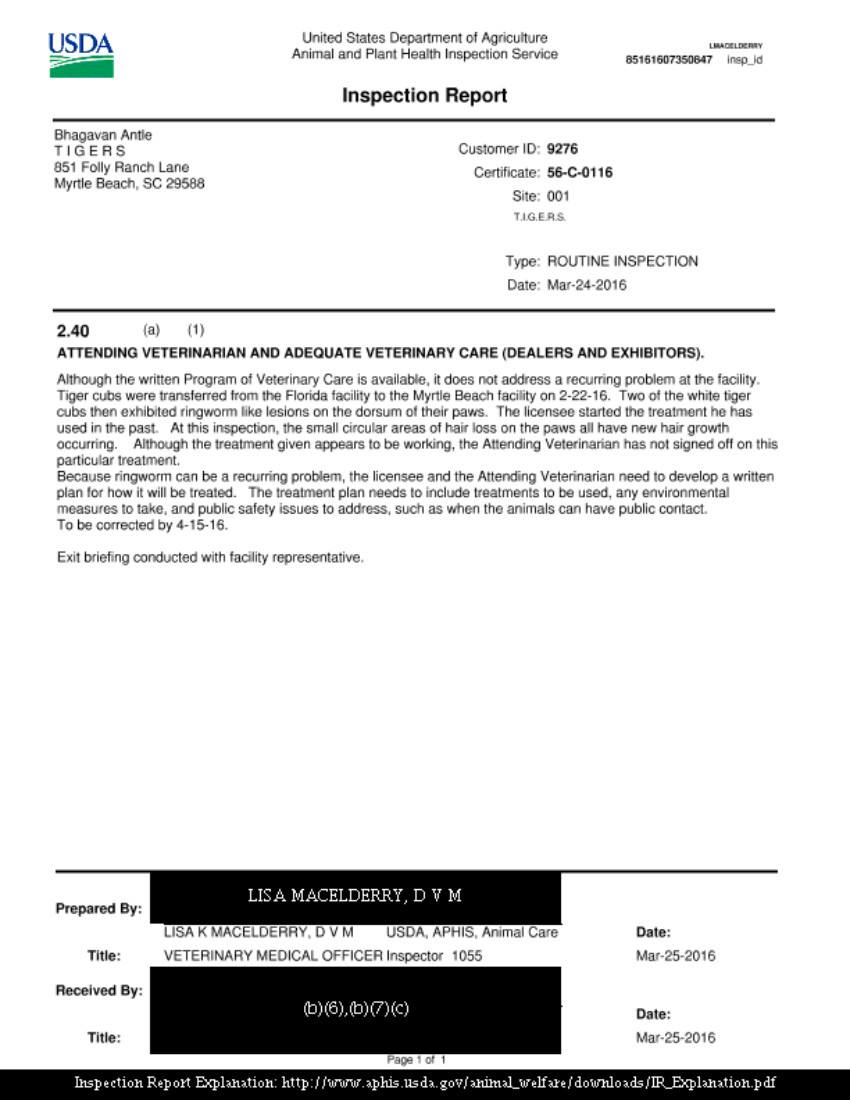 :
:
Ringworm is easily spread from infected cubs to those who touch them.
June 2016: Kevin Antle’s pay to play scheme is is involved in a federal investigation. The United States Department of Agriculture’s Animal and Plant Health Inspection Service has conducted 23 inspections at the facility since April 2013. A USDA spokeswoman told WMBF News APHIS typically visits a facility once a year. Businesses are visited more often if there is repeat noncompliance, or if complaints are filed.
The agency said it has 130 inspectors for about 10,000 facilities across the country. It largely relies on people who visit the facilities to point out any issues.
http://www.wmbfnews.com/story/ 32143305/myrtle-beach-animal- exhibit-under-federal- investigation
Overview
Exploiting tiger cubs. In our opinion, Kevin Antle (who calls himself “Doc” because he supposedly earned a doctor of natural sciences degree from the Chinese Science Foundation according to one report. Note that there does not appear to be a Chinese Science Foundation on the Internet) is one of the most notorious exploiters of tiger cubs in the country. Antle operates two facilities in Myrtle Beach, SC that offer cub handling and photo ops for a fee. One is a retail location called Preservation Station in a tourist area of town near the beach. The other is his zoo or park.
He incessantly breeds tiger cubs to use to make money at these locations. From what we are told by visitors, the cubs are taken to the retail location where they are subjected to being placed with and handled by person after person paying to have their photos taken with the cubs for a number of hours each day. Then the cubs are taken back to the zoo, where they are subjected to more handling and photos. Antle also takes cubs on the road to exhibit far from home at fairs or other venues, forcing the tiny cubs to ride long distances in a truck only to be handled by person after person for hours to make money.
Cubs used by exhibitors to make money from handling are typically torn from their mothers shortly after birth, a torment to both cub and mother. They are deprived of the comfort and nutrition of nursing and grooming by the mothers, subjected to unnatural levels of stress that lower their immune systems, and typically not allowed the natural amount and timing of sleep in order to satisfy customers. For more about cub handling in general see Cub Handling Factsheet
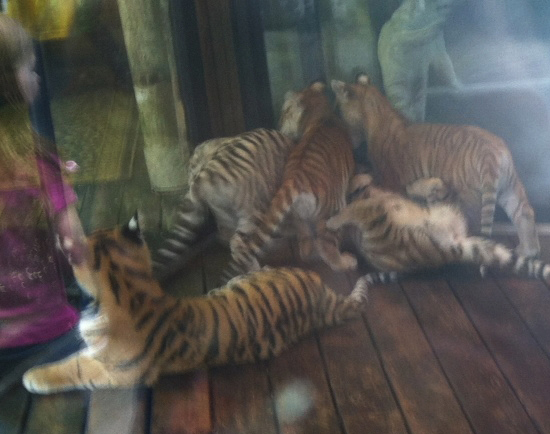 Where do Antle’s cubs end up? USDA guidance states that cubs should not be handled at under 8 weeks of age because their immune systems are not sufficiently developed, and not handled at over 12 weeks because they are classified as “juvenile” and dangerous. This creates a four week “window” during which cubs can be handled if exhibitors comply with the guidance. (NOTE: We and other much larger animal welfare organizations have been urging to USDA to close this 8-12 week “window” by banning cub petting altogether to stop the widespread abuse of cubs used for petting.)
Where do Antle’s cubs end up? USDA guidance states that cubs should not be handled at under 8 weeks of age because their immune systems are not sufficiently developed, and not handled at over 12 weeks because they are classified as “juvenile” and dangerous. This creates a four week “window” during which cubs can be handled if exhibitors comply with the guidance. (NOTE: We and other much larger animal welfare organizations have been urging to USDA to close this 8-12 week “window” by banning cub petting altogether to stop the widespread abuse of cubs used for petting.)
One visitor reported they were told by handlers that Antle starts using the cubs at 3 weeks of age, ignoring USDA guidance designed to protect the health of the cubs. Even so, there is only a brief period during which the cubs can be handled. So, Antle must steadily breed cubs to use in this money generating business. But, according to his USDA census, he only houses 51 tigers at his park.
Where do all these cubs go when they are too old for him to use to make money? There is no way to know how many of these tigers end up living miserable lives in conditions compassionate people who care about animals would consider inhumane. Per the report by TRAFFIC, the worldwide organization that tracks trade in exotic animals, the lack of tracking of tigers in the U.S. means there is also no way to know how many tigers end up being slaughtered for their parts to make “derivatives” like alleged medicines and tiger bone wine.
Visitors who have tried asking where the tigers end up tell us that they get evasive answers. According to one Animal Welfare Act violation case and “Animal Underworld,” Alan Green’s excellent book exposing the illegal trade in exotic animals, that two of Antle’s tigers ended up in the hands of Mario Tabruae. Tabruae was arrested in the late 80’s for heading a 10 year drug smuggling ring. His Zoological Imports business was featured in Green’s book. Some of Antle’s animals have ended up at GW Park in Oklahoma, another notorious exhibitor of tiger cubs.
Unsafe exhibition of adult tigers – USDA lawsuit. Antle used to make money photographing visitors in close proximity to big cats with no barrier to protect the public. In 2005 the USDA told him he was violating the safety rule that prohibits exhibiting without sufficient distance and/or barriers between the animals and the public. Antle sued USDA claiming his procedures complied with the rules. His case was so lacking in merit that he lost on summary judgment. He then appealed, and lost again. In our opinion, the idea that someone could safely stand within touching distance of an adult big cat is absurd because there is no way any “handler” can restrain a big cat that decides to attack. Antle made his argument despite the fact that, according to reports, in 1991 one if his lions who was posing with a female model bit her head resulting in 50 stitches and a $75,000 civil suit judgment against him.
Investigations, violations and injuries. Antle has a 20+ year history of USDA and/or state agency investigations and/or violations including hitting tigers, injuries, transporting animals without proper health tests and papers and containing them in areas that were too small, unclean, unsound and/or inadequate. A chronology of those violations appears below.
Breeding ligers and tigons and color variations. Antle is known for breeding hybrids between lions and tigers and color variations that do not occur in nature and have no conservation value according to experts. Their only apparent purpose is to draw visitors to see what in our opinion are freaks.
Helping conservation? Antle is a clever marketer who positions himself as making a significant contribution to conservation in the wild. Visitors are given literature that may cause them to think that Antle makes a significant contribution to conservation. Antle claims to have a “nonprofit grassroots organization” called the Rare Species Fund that donates to conservation in the wild. In our search, we were unable to find an entity of this name listed as a nonprofit by the IRS. We were not even able to find an entity with this name in South Carolina Secretary of State records. It appears to be simply a fictional name Antle uses. Antle’s brochure claims RSF is “among the world’s most effective conservation agencies.” The literature says that since the founding of RSF in 1982 it has provided “more than $200,000 to wildlife conservation effort.” This comes to less than $10,000 each year on average. This is likely to be a tiny fraction of the amount Antle makes from his for profit tours and animal handling fees. We are unable to find any financial reporting or disclosure related to this alleged entity. One of the groups Antle’s literature says he works with as part of his alleged conservation work is the Feline Conservation Federation (FCF). This is a group that advocates the private pet ownership of exotic animals that we believe leads to many animals living in what we consider to be miserable conditions and creates danger to the owners and public.
Tiger escape. Antle used to also keep a few tigers and other animals at Jungle Island in Miami. In August 2010 one his tigers escaped, sending visitors scattering. Fortunately the tiger was recaptured without anyone being attacked, although a news report indicated four people were treated for minor injuries. Antle was cited by USDA twice in the months following the escape for continuing to keep tigers in an inadequate enclosure. It appears from our research that by January 2012 he had transferred ownership of the animals to another licensee and did not renew his permits to keep animals in Florida.
Lies regarding critics. Because exploiters of tiger cubs have no true basis for justifying their mistreatment of the animals, they typically try to discredit critics with false statements about the critics. Antle is no exception. Big Cat Rescue in Tampa has made exposing what we view as abuse of tiger cubs a priority. In response, Antle makes false statements and points to websites set up by other exploiters containing false statements about Big Cat Rescue and Founder Carole Baskin. Among his lies have been claims that he is the copyright holder of photos Big Cat Rescue posted to expose his operation. When challenged under the provisions of the Digital Media Copyright Act, Antle was unable to back up his lies and the images were reinstated.
What is it like to work at T.I.G.E.R.S.?
Barbara Fisher spent 8 years in the cultish compound and says, “So why didn’t I just leave? Why don’t the suicide bombers quit before they are forced to kill themselves? It’s not like they are forcing them to stay; they choose to, right? Well, this is very easy to say but very hard to do in real life. When so much of an individual’s identity is invested in an extremist group, leaving can mean losing everything: property, people, identity, accomplishment, and years and years of work.” Read the rest of her story here: http://iowainformer.com/commentary/2017/03/bhagavan-doc-antle-rolling-stone-tigers/
Chronology of Citations/Investigations/Escape/Injuries from news reports and government documents
Nov 16, 2010 cited again for tiger enclosures that were no different from the one that enabled an escape in Aug 2010.
Sept 10, 2010 cited for failing to house the tiger who had previously escaped in a cage that was any different from the one he had escaped from on Aug 28.
Aug 28, 2010 Visitors to Miami’s Jungle Island were treated to a scarily authentic experience when a tiger sprang from its pen at the tropical tourist attraction. Hundreds of terrified guests ran for safety when the big cat, known as Mahesh, broke out of its enclosure. According to MSNBC, the 3-year-old tiger spent an hour enjoying its newfound freedom before being recaptured.
June 8, 2010 failed to have a person of legal age available at Miami’s Jungle Island site to let the USDA inspect the facility.
May 10, 2009 As an example of where Antle’s tigers end up, in AWA Docket No. 09-0085 the judge found that Bhagavan Antle released two tigers to Ray Thunderhawk, who had already lost his USDA license and who had abandoned 75 tigers in Palm Bay, Florida. Thunderhawk ran a “pay to play” operation whereby patrons pay to pet and pose with big cats and he took the two tigers from Antle in S.C. to Boston before taking them to the buyer in Miami. The buyer was Mario S. Tabruae of Zoological Imports 2000 located at 16225 SW 172 Av Miami, FL 33187. Tabruae admitted to falsifying records to make it look as if he had purchased directly from Antle and that Antle had delivered the tigers. Dec 12, 1987 New York Times reports that Mario S.Tabruae was arrested for:
A drug-smuggling ring that killed an informer and cut up his body while trafficking in a half-million pounds of marijuana has been broken, the Federal authorities said today. The ring also bribed police officers to protect their operation, said Richard Gregorie, the chief assistant United States Attorney here. At one time, the indictment charged, members of the ring used Miami police officers to collect, count and disburse drug profits.
The ring operated for at least 10 years, smuggling the marijuana, along with some cocaine, into Louisiana and Florida, Mr. Gregorie said. Six of the seven people indicted in the case were arrested here by a special Federal law-enforcement group combatting drug smuggling. The seventh was in custody in another state. $50,000 Caught by Agent Among those arrested were the men who the authorities said headed the ring, Mario Tabraue and his father, Guillermo. When the men were arrested at their homes in Dade County, Mario Tabraue’s wife tossed a bundle of $50,000 in cash out the back window, said Lloyd E. Dean, an agent of the Federal Bureau of Investigation here. The money was caught by a Federal agent, Mr. Dean said.
December 1994 Antle was fined $1000 for transporting a bull and cow without proper health tests and papers. He was also cited for night boxes that were too small for zebras, wolf hybrids and tigers.
July 6, 1994 US Department of Agriculture investigation for failing to supply proper travel papers in Kodak, TN in Sevier County. Antle was also associated with a second investigation into the legality of whether interstate transportation and exchange of baby tiger cubs. Antle was also under investigation because one of his tigers bit a trainer who was visiting Antle’s Buckingham Zoological Park in Virginia.
Dec 1993 transporting a bull and cow without proper health tests/papers in Kodak, TN in Sevier County
May 1992 Sharp wire was at the top of the zebra fence.
Nov 1991 An electric cord from a space heater dangled within reach of an elephant.
Oct 11, 1991 charged with hitting his tigers in Carver, MA in Plymouth County. Antle and his handlers were seen hitting wild cats at a fair according to the Animal Rescue League of Boston. Antle stated he hit the tigers when they became too aggressive.
Another investigation found that Antle allowed people to have their pictures taken with the animals, failed to list a cougar among the animals he brought to the state and had overstayed his permit according to Tom French, assistant director of the Massachusetts Division of Wildlife. Antle at that point was asked to leave Carver, MA within 24 hours.
According to one report, Antle returned to Massachusetts without the knowledge of wildlife officials under the guise of other company names, and at the time that led the Massachusetts wildlife department to declare that it would not issue any more permits to Antle. However, they apparently have, since he reportedly has been performing at a fair there for decades.
Oct 9, 1991 lion named Arthur bit a model during a photo shoot requiring 50 stitches in Manchester, NH in Hillsborough County. Antle allowed a Konica lion named Arthur to pose for pictures with a Bedford, NH model. Shannon Audley, 23, of Bedford, NH was injured when the 6-year-old lion opened its mouth and clamped down on one side of her head. Audley’s head was cut, and she was admitted to Catholic Medical Center where she needed more than 50 stitches to close the wounds to her head and was hospitalized for about 5 days. Audley also had to undergo a series of rabies shots because Antle left the state with the lion and it couldn’t be determined if the lion had received a rabies vaccination.
Audley was awarded $75,000 in her lawsuit against Antle, under a default judgment. A default judgment is entered when a defendant takes no action to contest a claim against him. Audley was seeking $250,000. Audley also filed a suit against Bill Melton, the Manchester, NH photographer, but the court dismissed that action. Antle claimed the model was cut falling off a platform.
Sept 1991 The pit of a young zebra was called inadequate and exposed nails were found in animal enclosures in at least 2 inspections.
Aug 21, 1991 Antle was assessed a $3500 penalty to avoid litigation over 7 alleged violations, including animal enclosures that were unclean and structurally unsound and supplying incomplete travel and identification records. He did not have to admit innocence or guilt as a result of the order. Kodak, TN in Sevier County As of July 14, 1994 the penalty has not been paid.
July 1991 Antle was cited for unclean and unsound animal enclosures, incomplete travel and ID records. Monkeys were kept too close to coyotes and a baboon across from a jaguar. An exhibit site for an elephant had no way of preventing the animal from entering a highway if it got away from the trainer. Kodak, TN in Sevier County
1991 Antle came home from his tiger roadshow to an outstanding misdemeanor warrant issued by the Tennessee Wildlife Resources Agency. It charges him of letting a tiger come in contact with the general public at a 1990 bodybuilding contest in Sevierville. It was served on him and carries a $50 fine if he’s convicted.
December 1989 Federal inspectors find zoo vacated with deer and peacocks left behind in Buckingham, VA
###
Antle Tiger Escape at Jungle Island August 2010
August 29, 2010 Miami, FL: Visitors to Miami’s Jungle Island stampeded over each other to avoid an escaped, 3 yr old, 500 lb. tiger named Mahesh. A monkey escaped while being transported through the zoo and 500 lb. Mahesh bounded over the 14-foot fence into the public area according to the Miami Herald. The attraction’s three big cats — which include a liger and a white tiger — have been confined to a “night kennel,” while the park investigates. “We were really scared. There were people crying,” Miami mom Dorothy Evans told the Herald, adding that people knocked each other down as they sprinted toward the shelter. “People were running for their lives,” Larry Rhodes, 46, of Pompano Beach, told the Sun Sentinel. Miami Fire Rescue Lt. Ignatius Carroll told the Herald that several people were injured while running, including a mother who fell on top of her 15-month old baby. Another guest was taken to a Miami hospital after suffering a panic attack. Bhagavan (Kevin) Antle, who also owns T.I.G.E.R.S. in Myrtle Beach, SC and who is the owner of Mahesh, was charged with one count of maintaining captive wildlife in an unsafe condition, resulting in threats to public safety. Park owner Bern M. Levine was charged with two second-degree misdemeanors for conditions resulting in the animals’ escape. The charges for both men have a maximum penalty of $500, FWC officer Pino said. Source Time and others.
About Antle in the book Animal Underworld
Page 35 of Alan Green’s book Animal Underworld: “An animal handler who has claimed to also own an Exxon tiger is Bhagavan Kevin Antle, who was an assistant to Jack Hanna during his appearances on Good Morning America and Late Night With David Letterman. Known alternatively as Kevin Bhagavan, Kevin Antle, Mahamayavi Bhagavan Antle, Ghagavan Antle, and Dr. Kevin Antle (he supposedly earned a doctor of natural sciences degree from the Chinese Science Foundation), Antle also claimed to own the MGM lion, even though Metro-Goldwyn-Mayer Inc. sent him a cease-and-desist letter, and he implied in his literature an affiliation with Greenpeace, until he was told to cease and desist. Antle is a self-described big-cat conservationist who presides over The Institute of Greatly Endangered and Rare Species (TIGERS), which operates a mobile petting zoo, leases tigers for TV commercials, and charges people at shopping malls and festivals to have their pictures taken with an animal. Antle hauls around a crossbred lion and tiger to such places as casinos in Biloxi, Mississippi. He is also known for owning a lion that, in 1991, had to be pulled off a terrified model during a photo shoot in Manchester, New Hampshire. That same year, the federal government charged Antle with repeated violations of the Animal Welfare Act, including substandard housing for big cats, and to settle the charges he agreed to pay a $3,5000 fine. He was also cited in Massachusetts that year for illegally displaying his cats, and he was threatened with arrest and confiscation of the animals if he didn’t immediately leave the state. What’s more, Antle was the target of an unsuccessful 1991 Tennessee lawsuit regarding his alleged beating of a Bengal tiger with a wooden shaft.”
Antle Claiming to be an M.D.
In an article he wrote for the Phoenix Exotic Wildlife Association in 2005 Antle claimed to be a medical doctor saying, “I still think this is your right to have your own tiger and to be killed by your own tiger. Just keep it in a cage forever and don’t let anyone else near you or watch you have it happen. I know this rambled on a bit but I was trying to make several points that are hard to explain. I often say that as an MD., I can talk you trough [sic] taking out someone’s kidney, but I can not talk you through tiger training. You have to live it to understand it. Dr. Bhagavan Antle”
1991 News Article
Antle, 34 and his high-profile business are in the middle of an ongoing animal-rights debate.
Antle, whose full name is Mahamayavia Bhagavan Antle though he has gone by the name Kevin, is an animal trainer who supplies trained animals for advertising, commercials, film work and shows.
He opened the park on Bryan Road within site of Interstate 40 in late May. It is open to the public. It houses dozens of animals ranging from tigers to lions, to wolf hybrids, an elephant, primates and some deer. Antle said he also has some animals in Korea, where he has been working on a show involving trained animals for a resort.
Animal-rights advocates say he routinely doesn’t follow federal animal welfare regulations.
Among the charges leveled by regulators and animal-right groups are that Antle doesn’t provide proper shelter for the animals, doesn’t give them enough access to water, gives incomplete records to federal and state officials and allows the public to come in contact with the dangerous animals.
Animal-rights activists said Antle cares little about the animals or the public. They believe Antle beats, mistreats and drugs the animals to make them act domesticated for commercials, television, movies and his shows.
“He’s out there to make money and that’s all he’s out there for” said Sue Pressman, a West Virginia zoo consultant who helped write the Animal Welfare Act and who gave a critical inspection report of T.I.G.E.R.S in August 1991. “He needs to go to jail” stated Pressman.
“It’s a lie the United States Department of Agriculture comes here all the time to inspect us,” Antle said. “The USDA’s sole purpose in life is sanitation.”
But Sue Pressman, a consultant for P.A.W.S., the Performing Animal Welfare Society who toured T.I.G.E.R.S. on Aug. 3, said it was rife with violations of the Federal Animal Welfare Act.
“We went through and there were lots of problems,” said Don Elroy, co-director of the Tennessee Network for Animals, which invited Pressman to the area. She is a former longtime director of Captive Wildlife for the Humane Society of the United States.
Among the problems Pressman said she found were a host of sanitary (violations, a dangerously low perimeter fence that might allow animals to escape, a fence enclosing tigers that is configured in a way that could allow the cats to climb out and an elephant chained without shade and water.
Elroy said there are also questions the group has about the registration of some of Antle’s animals. He said a lot of the problems are already laid out in previous USDA inspection reports of the facility.
“We want to see some demonstration of compliance,” Elroy said. “He’s not trying to improve the facility.” Elroy also questioned how the USDA could give Antle a license until he was in full compliance with all regulations.
Antle, however, countered that T.I.G.E.R.S. was licensed by the USDA in May and that USDA veterinarians were back inspecting the facility only a few days before Pressman was there.
He said that groups like P.A.W.S. are against him no matter what. “No matter what our facility looked like, the lady would have complained,” Antle said. He also displayed the USDA exhibitor license for T.I.G.E.R.S. and copies of USDA inspection reports on May 21, 1991, and July 16, 1991.
“A few days before that lady was here, they (USDA) made an inspection, and nothing was said about sanitation,” Antle said. “And these men were experts.”
The USDA issues the permits for parks like T.I.G.E.R.S. “The USDA says we pass unequivocally,” Antle said. “They said they want us to fix water bowls. They said our weeds were higher than they wanted.”
The USDA inspection report on July 16, which Antle provided to a reporter, lists two pages of handwritten recommendations of corrections. Inspection reports dating back to 1988 for Antle-owned facilities – he also owned Buckingham Zoological Park in Buckingham, Va. – have similar lists.
Despite all of this Antle has never lost his license to exhibit animals.
Reference:
The Knoxville News-Sentinel
The Union Leader
Knight Ridder
Tribune News Service
Video Exposing Treatment of Circus Animals
1990 News Article
This 1990 news article exposes “Doc” Antle for the dangerous fraud we believe he is. The article, from The Tennessean, was written at a time when Antle was planning on opening a zoo in Cheatham County, TN (the plan ultimately fell through). Local press were suspicious of Antle’s background and did some digging, revealing “a pattern” of USDA violations, an ongoing investigation of Antle’s facility, and an incident where a visitor was severely bitten on the hand by a tiger. Antle tried to cover up the incident by claiming that the man closed his hand in a gate because “a tiger bite would be bad for business.”
The article also found no evidence that the educational institutions Antle claims to have earned “doctorates” from ever existed, and reveals his longstanding pattern of carelessly risking the safety of volunteers, staff, and the public, repeatedly lying and changing his stories, and breaking promises to pay for his staff’s expenses.
Allegations downplayed: Zoo owner’s file includes mauling
The Tennessean
March 11, 1990
Ellen Dahnke, Staff Writer
Kevin Antle boasts that he has “trained and worked with animals all over the world” and that it will be “wonderful” when he opens his zoo in Cheatham County.
But investigations by the U.S. Department of Agriculture paint a different picture, raising questions about how he treats animals and how he protects his visitors from his more dangerous pets.
Antle, a 29-year-old trainer, pooh-poohs a current USDA investigation, saying it is a minor matter about “just two peacocks and two deer” he left in the hands of a caretaker. USDA regulatory enforcement and animal care inspectors confirm there is a pending investigation but refuse to give details.
Yet USDA files obtained by The Tennessean through a federal Freedom of Information Act request show past allegations of a visitor being mauled by a tiger at Antle’s Virginia Buckingham Zoological Park, contamination of animals’ food and impediments in animals’ living conditions.
All this comes as Antle and Mike Stuart, who has raised exotic animals here in Tennessee, prepare to open the Cheatham County zoo next month. Antle and Stuart surprised Nashville residents last fall in announcing the zoo; Nashville Zoological Society had already been involved in a lengthy process to begin work on its zoo, which is not scheduled to open until 1992 at the earliest.
The announcement in fact set off a war of words between the Cheatham County zoo owners and members of the Nashville Zoological Society, with director Connie Cloak calling the new zoo a “chain-link menagerie.” Stuart and Antle accused Cloak of trying to “recreate Disneyland” with the society’s proposed zoo.
Yet the Tennessee Wildlife Resources Agency granted the Cheatham County zoo a permanent exhibitor’s license in January, according to Jack Murray. He said any USDA investigations do not play a part in granting the license because the agency is required to grant a license for any facility that meets state regulations.
By far the most serious claims against Antle in the USDA’s file involve the complaint of Clinton Baron, then from California, who told USDA inspectors that Antle allowed a tiger to seriously maul his hand when he visited the Buckingham park in February 1986.
Asked about the incident, Antle said Baron “slammed his hand in a gate.” Yet, in a sworn deposition to USDA officials, Antle makes no mention of the gate. And Baron, in his deposition, told authorities Antle asked him to tell doctors he slammed his hand in a gate because the tiger bite “would be bad for publicity.”
Baron told the USDA he visited Antle’s Buckingham park to see about jobs for two women he knew. Antle told officials he hired Baron to work on a show in Florida.
Arriving at the park, Baron initially expressed concern that a keeper was ordered by Antle into a “12 foot by 12 foot cage” containing two fully grown Siberian tigers. Antle held both cats by the hair, according to Baron’s statement, while the “obviously naive keeper . . . unaware of the potential danger and risk of injury should either of the two tigers become aggressive,” raked the cage.
The next day, Antle woke Baron, the testimony continues, and told him to meet him outside. He dressed and was led by two employees to a field where Antle was walking a tiger.
Antle maintained in his statement that Baron began punching the animal. Baron told officials he did punch the animal with a free hand to get the tiger to take his teeth out of Baron’s other hand.
“I approached to about 8 feet from his tiger and he directed me where to stand,” said Baron. “I protested his allowing his cat near me and raised my left hand between the cat and myself.
“The cat then grabbed my fingers with its mouth.”
Baron acknowledged punching the animal to attempt to get his hand released, but said the tiger held on, “additionally ripping my palm apart as I pulled out my hand from its mouth.”
Baron said he packed his hand in snow and insisted that Antle drive him to the hospital. According to Baron, Antle told him he could treat the wound with “herbal medicine” at his house, but then finally agreed to take him to the hospital.
Antle said he only dropped Baron off at the hospital, but Baron told authorities that Antle himself told the receptionist that Baron caught his hand in the gate.
Although Baron contended Antle promised to pay all medical expenses, he said Antle then refused any assistance.
Antle now says Baron “just stayed in the hospital on his own. There was nothing wrong with him.”
Antle said the USDA cleared him of the charges, but what USDA’s Office of General Counsel reported was that the incident was inconclusive because Baron was a visitor and Antle was not exhibiting the animal to the general public. The report further stated that without witnesses, the exact nature of the incident could not be determined.
However, the USDA did send a warning to Antle to use care in showing animals.
Baron filed a $500,000 lawsuit in Buckingham County seeking damages from Antle. Antle said the matter is closed. The Buckingham County Circuit Court clerk said the matter is still pending, although the last entry is the withdrawal of Baron’s attorney, Gary Coates of Lynchburg, from the case. Coates would not comment on the case, except to say one of the reasons for withdrawing was his inability to locate Baron. Attempts to reach Baron were unsuccessful.
Antle blames most of his troubles with the USDA on the department’s reluctance to “understand” the nature of his business.
Much of his business involves traveling with his animals and doing commercials, he said, which kept him away from Buckingham when USDA dropped in.
And, he did indeed travel. New York advertising executive Brendan O’Malley, with whom Antle did a commercial training some animals for a Saran Wrap advertisement said he was “wonderful with animals.”
USDA inspection reports, however, record past trouble getting the itinerary for the menagerie and getting records of the animals when department officials visited.
“USDA never bothers to call you and tell you when they are coming,” Antle said. “They just drop in whenever they want to. We were traveling most of the time and they never understood that.”
USDA is authorized to regulate and enforce animal care and welfare. An Office of General Counsel spokesman said a pattern of violations, such as Antle has, could lead to more serious charges, including fines and possible suspension of license.
But USDA inspectors refused to say if the pattern of violations is part of their “pending investigation” of Antle. Antle refused to call the current matter an investigation and said it merely involves the deer and peacocks on the Buckingham property, which he said a caretaker looks after.
Mike Stuart, who co-owns the zoo in Cheatham County, has no record of violations with the USDA, officials said.
The brochure on the new zoo says Antle greow up on a huge ranch in Arizona, where he first learned to care for animals, and was later educated abroad. The name Bhagavan, by which Antle is known on official USDA documents, was a “name on my mother’s side of the family,” he said. Antle said he started using the name Kevin because he did not want to be confused with Bhagwan Shree Rajneesh, the late guru whose followers took over a village in Oregon.
Antle, who lists himself as having a doctorate, said he has documents showing his degrees from the British College of Natural Science in Poole, England, and the Chinese Science Federation. The library in Poole had no record of the institution there, which Antle said closed in 1984. The British Ministry of Education said it also could not find evidence of the school. It did not have a royal charter, an official said, although until 1988 independents did not necessarily have to register anywhere. The law was changed then to ensure that only registered schools could give out degrees, the official said.
“Getting a degree abroad is different than it is here,” said Antle.
Valeries Graves, originally from San Diego, considered a job with Antle but discovered he required a two-year contract.
She said he promised to pay all her bills, including her car and credit cards, with the stipulation that they be available to the zoo. She said Antle told her he would give her spending money if she needed it.
Antle denies promising her a job, although he said he does require a “two-year apprenticeship” because “I’ve had too many people leave on me.” Yet Graves could not get Antle to return her belongings, including winter clothes, she had sent to Buckingham in anticipation of taking the job. She said she was told there was never any room on the truck when employees were moving from Virginia.
“She sent them to Buckingham without even having a job and nobody lived there,” he said. “That’s not my fault.”
“I couldn’t leave and get them.”
In Buckingham, E.M. Wright, the county attorney who knew Antle from a video in which his children appeared with animals trained by the zookeeper, recalled him as “a colorful character, but I really can’t say anymore.”
Meanwhile, work continues on the new zoo.
Bhagavan “doc” Antle USDA Inspections
BhagavanAntle-2007-04-09-Vet-Site002
BhagavanAntle-2012-10-06-Handling
BhagavanAntle-2013-08-21-Facilities-Site002
BhagavanAntle-2014-02-05-Enclosures-Site002
BhagavanAntle-2015-04-23-No Access-Site002
BhagavanAntle-2015-04-28-Sanitation-Site002
hagavanAntle-2015-10-21-No Access-Site002
BhagavanAntle-2016-02-18-Vet–Site002 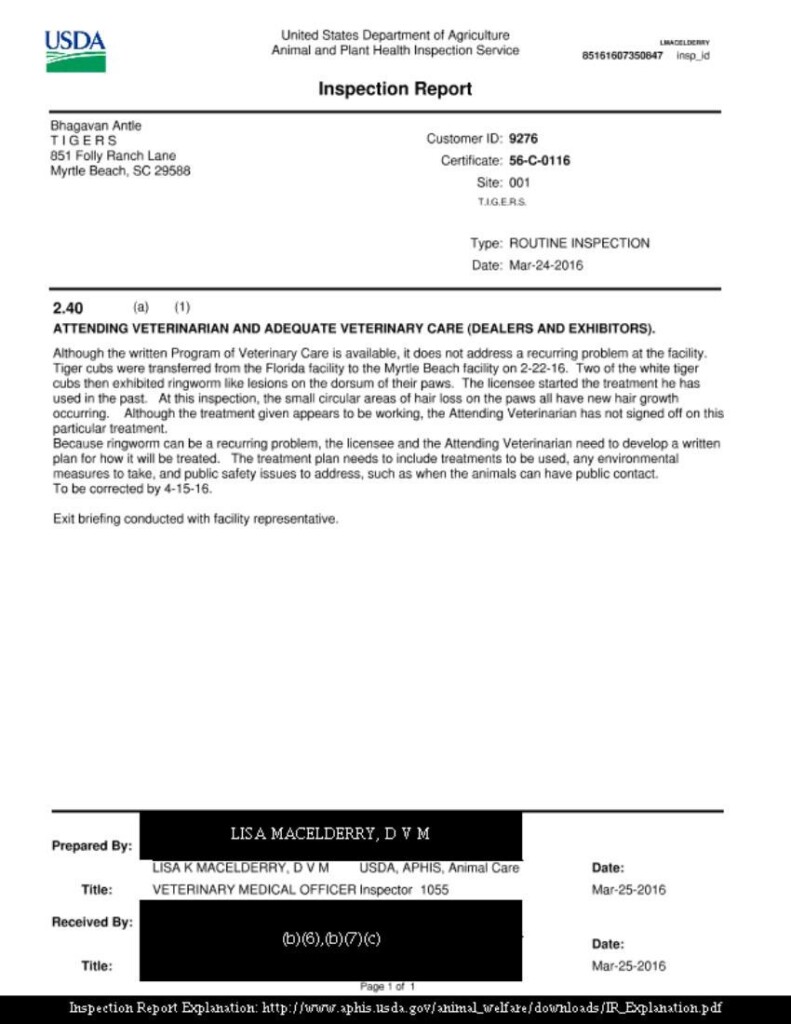
BhagavanAntle-2017-01-31-Facilities-Site002
BhagavanAntle-2018-01-12-Housing-Site002
BhagavanAntle-2018-09-10-NoAccess-Site002



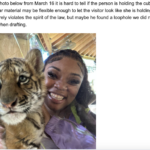
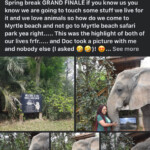


































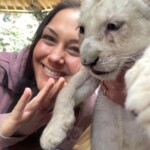











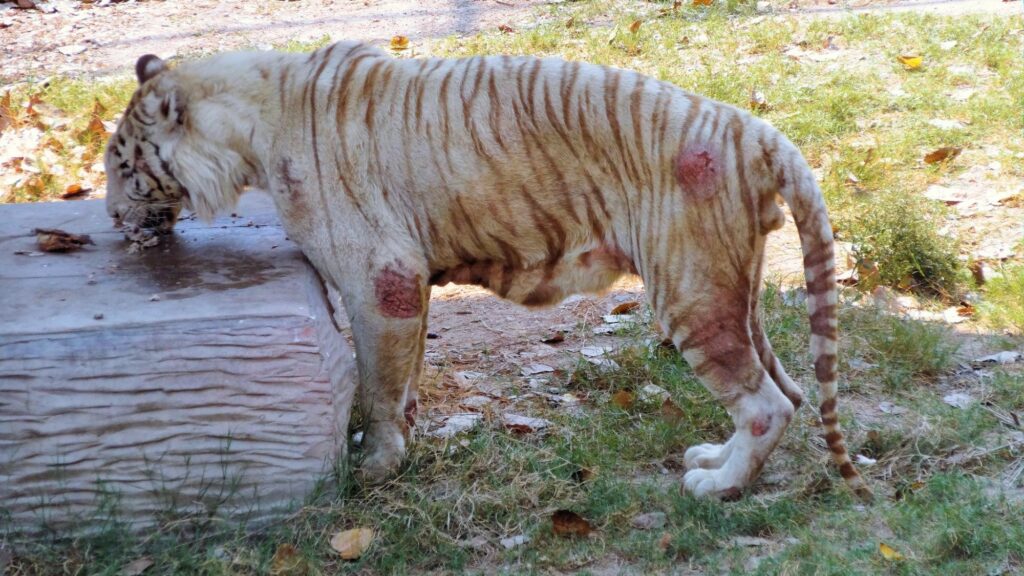
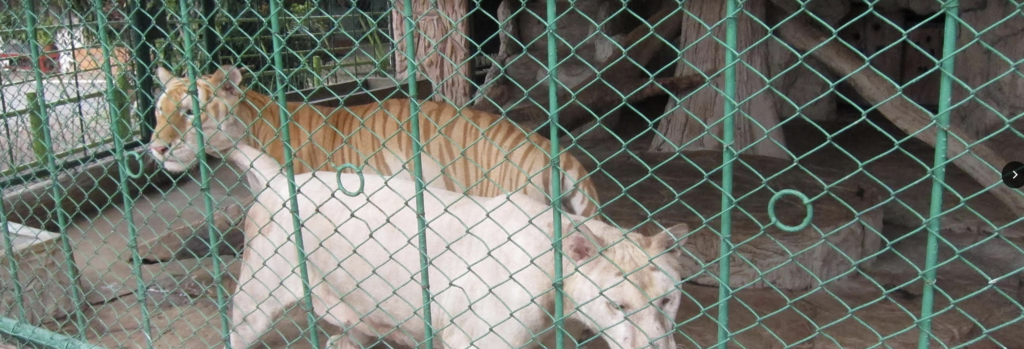
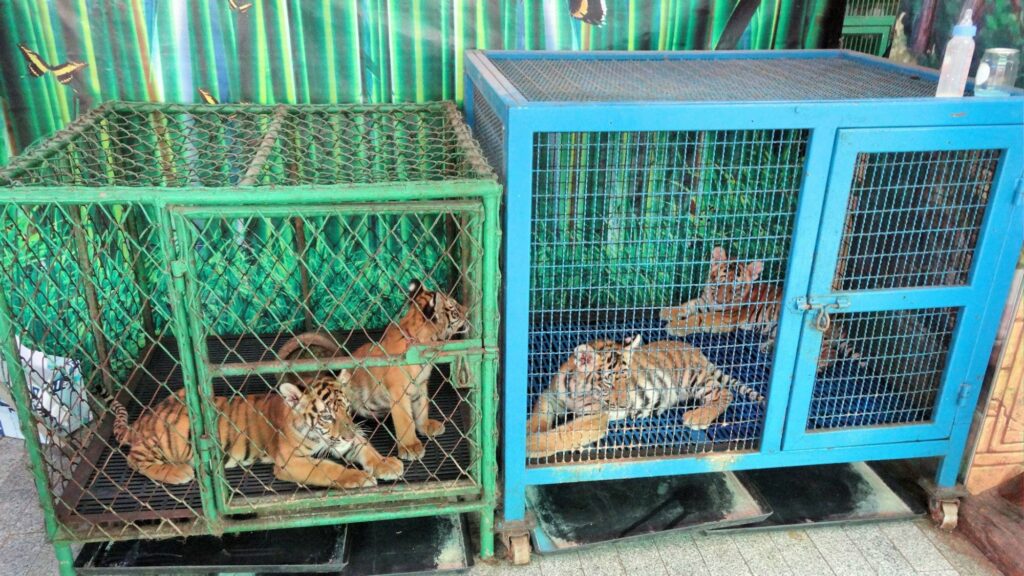
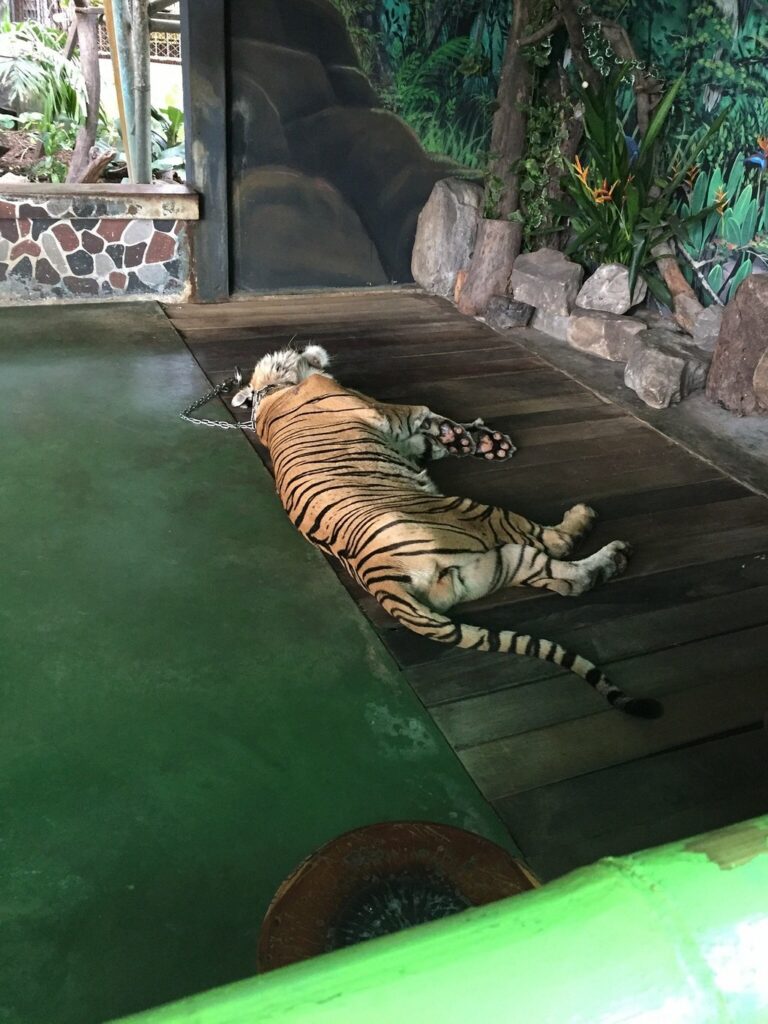
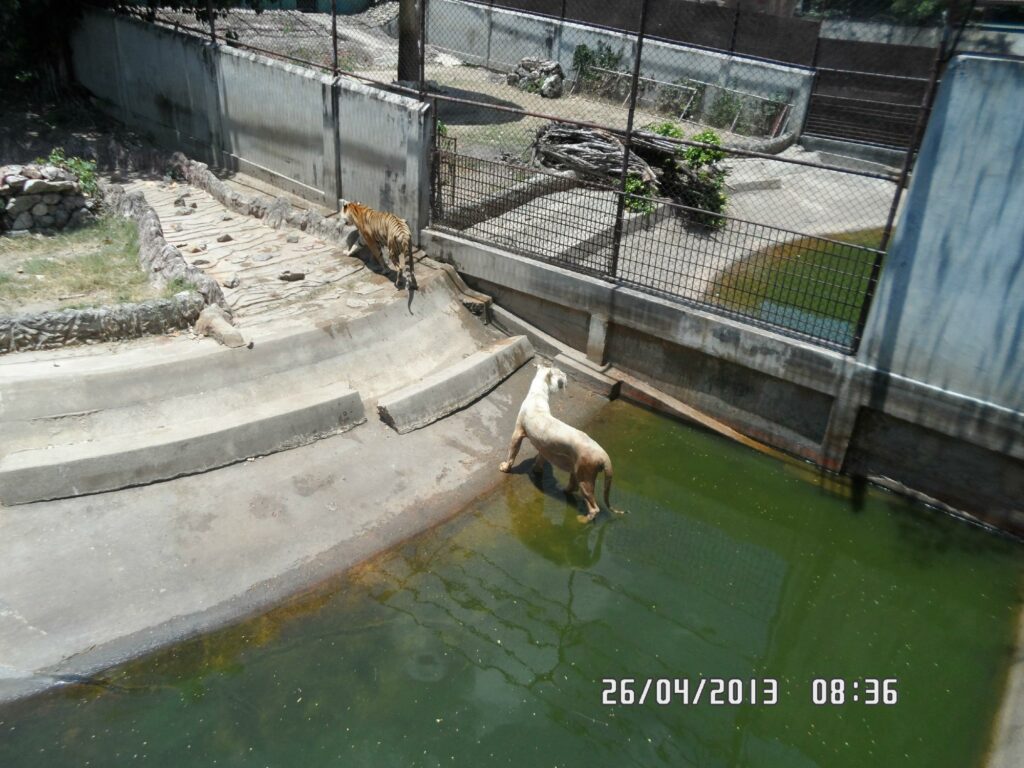

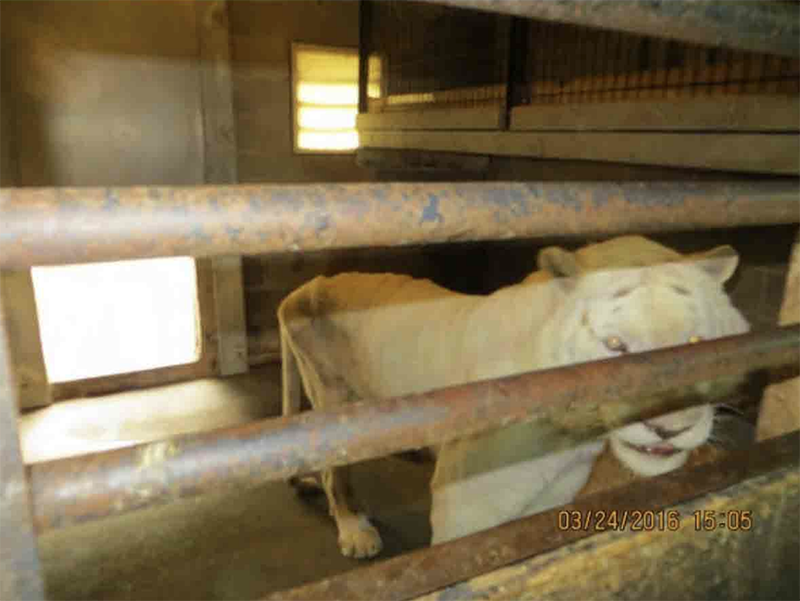
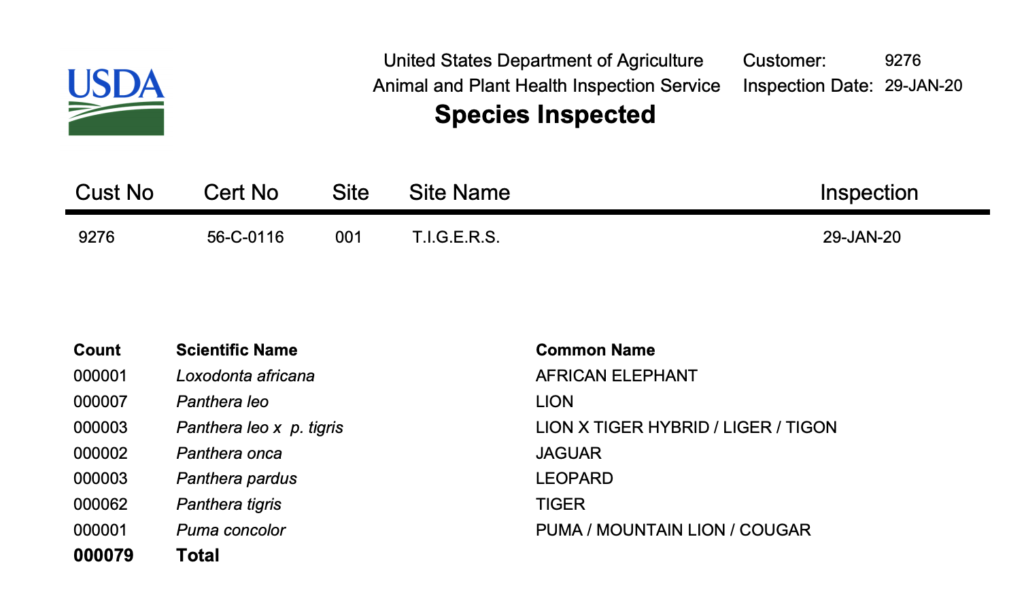

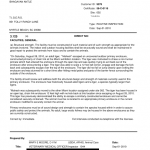
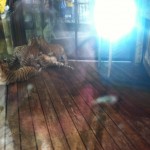
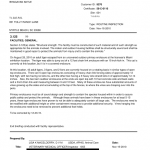




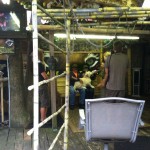
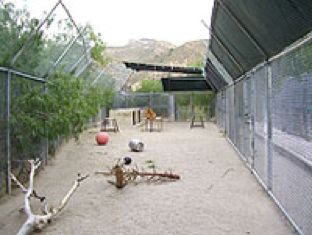
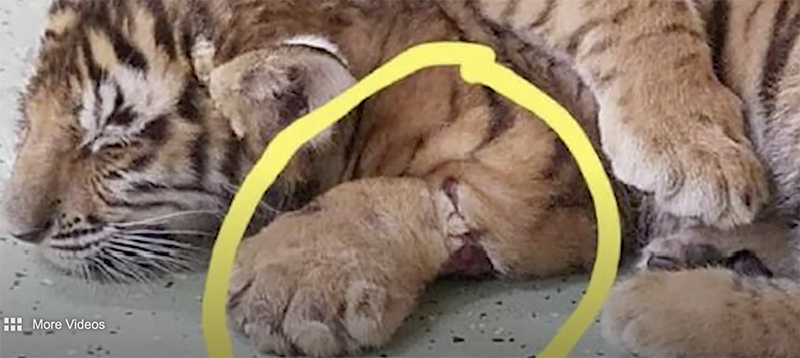
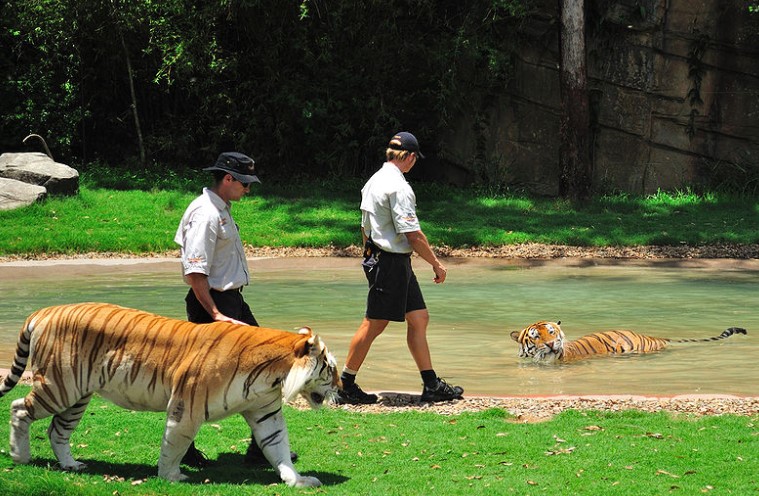

7 Comments